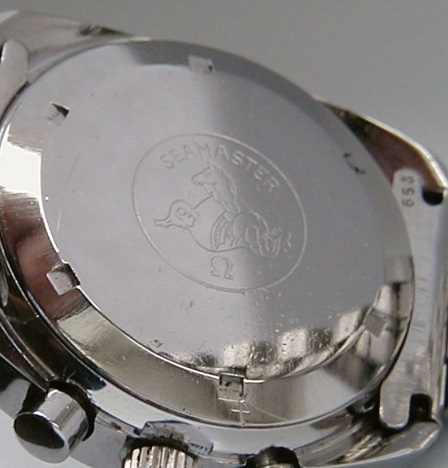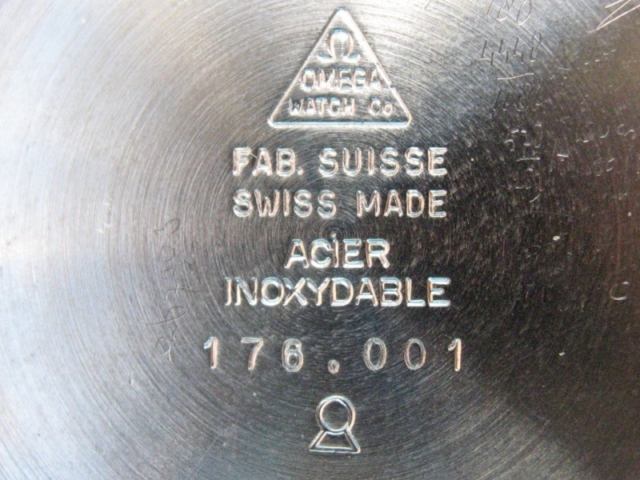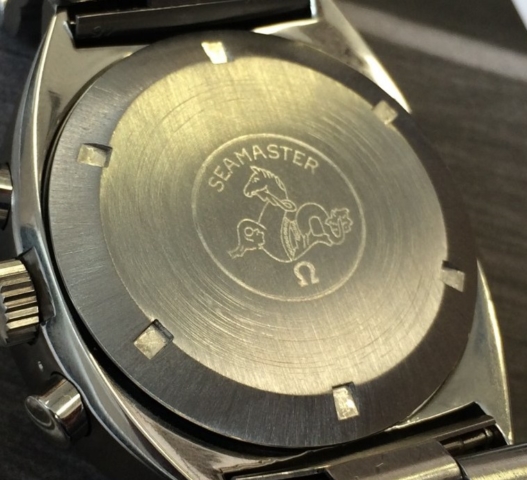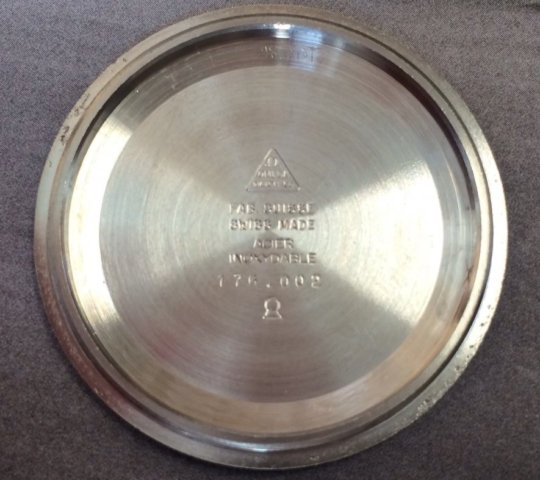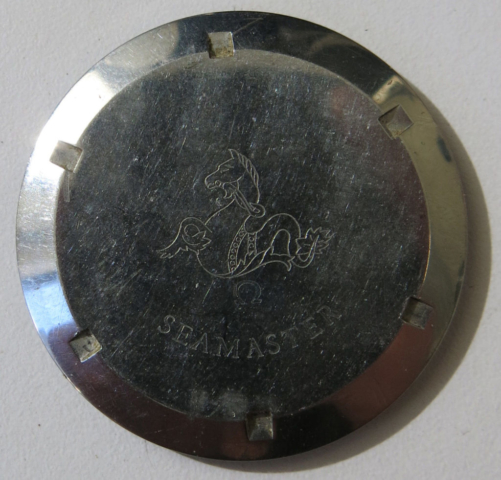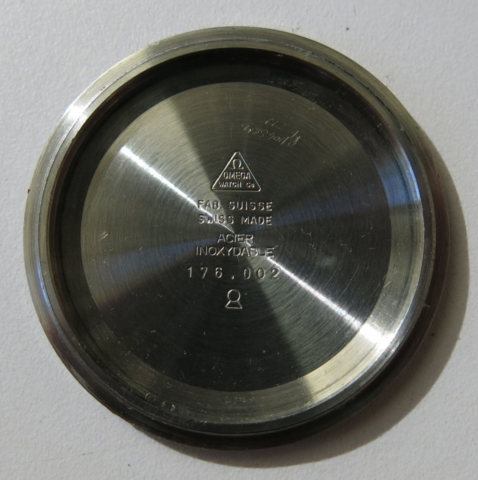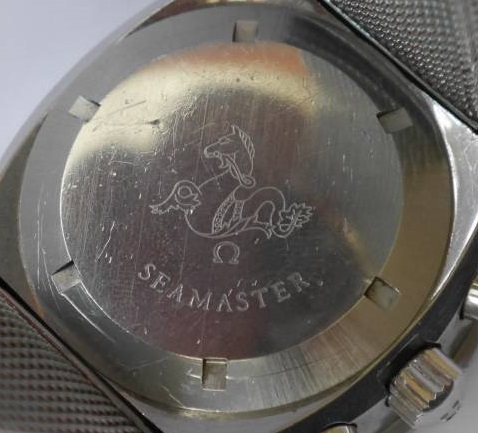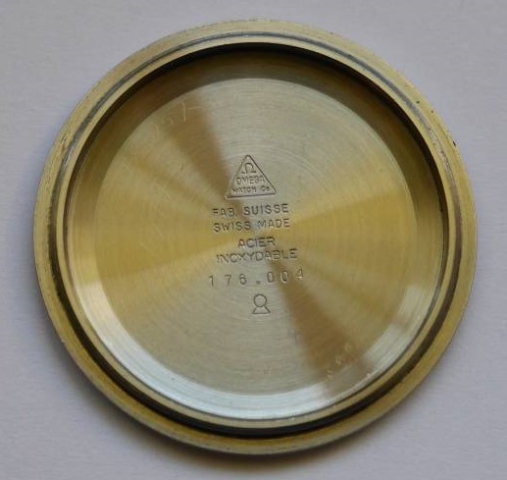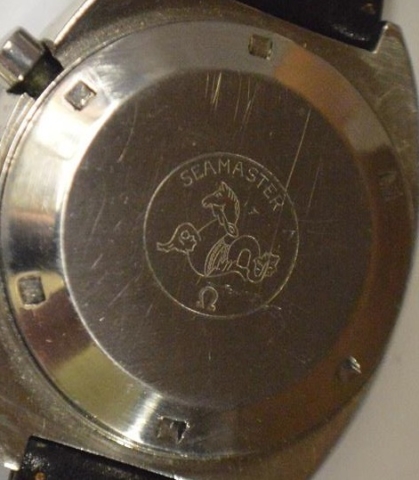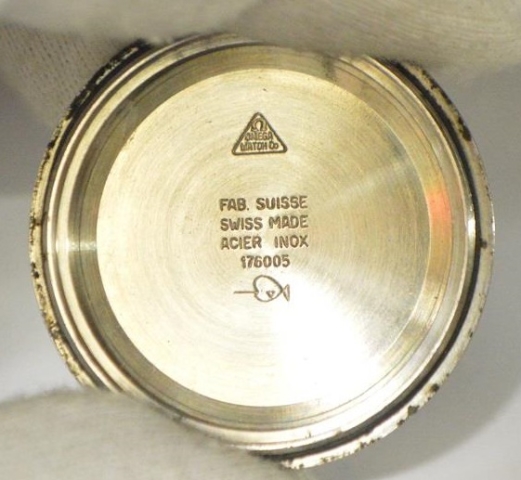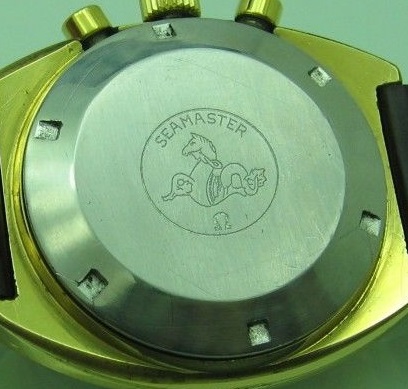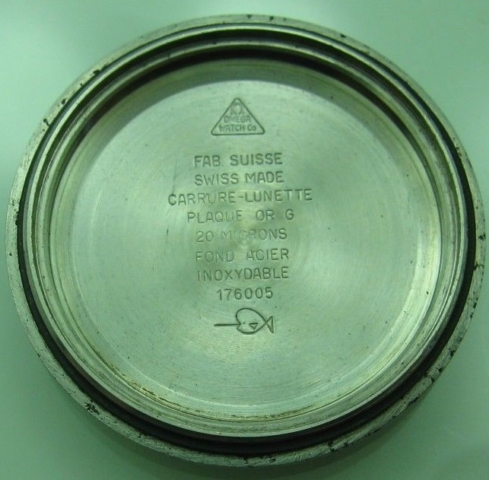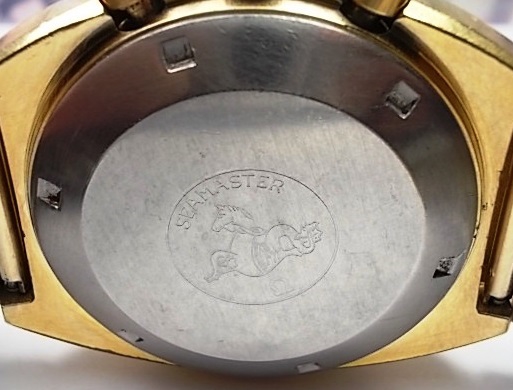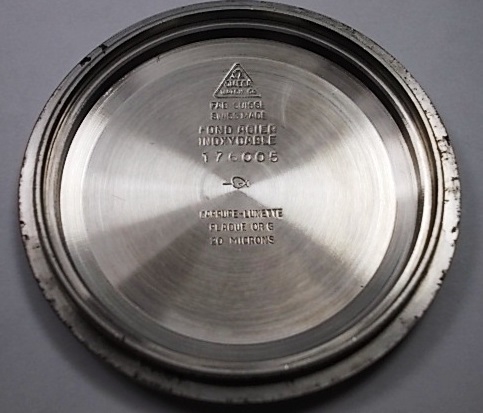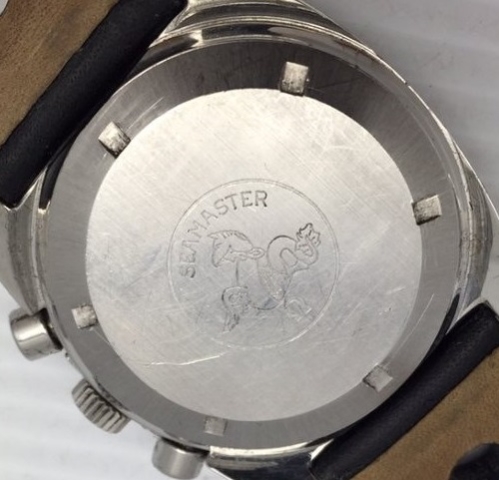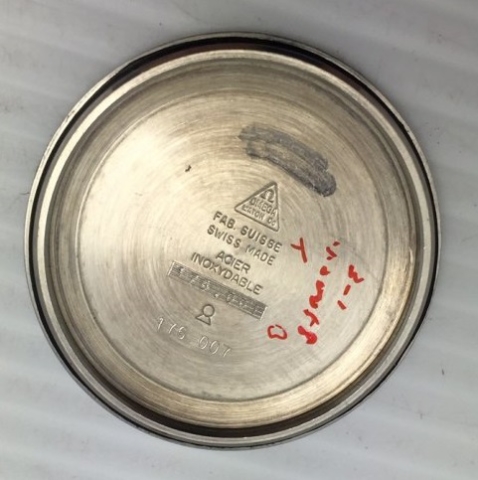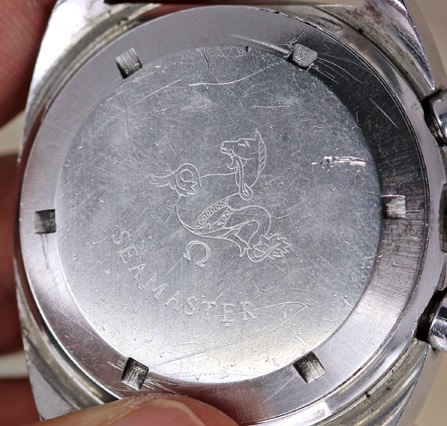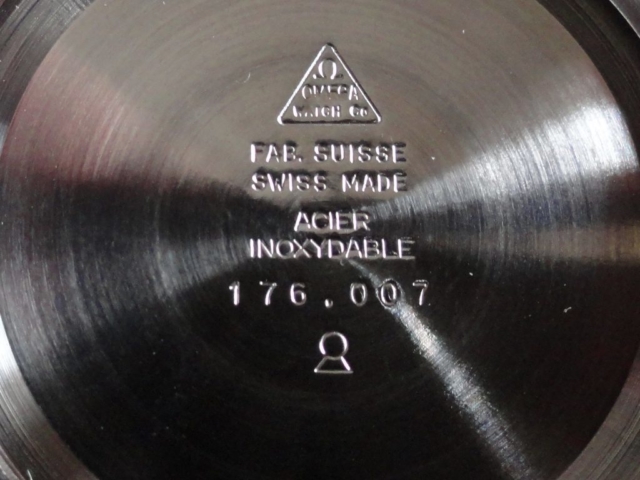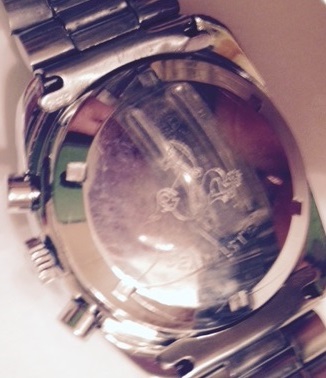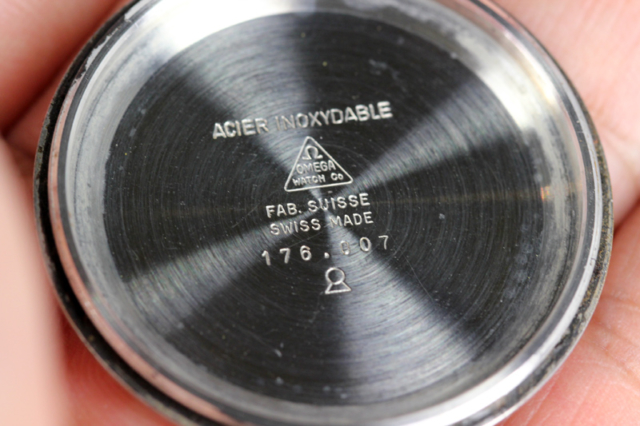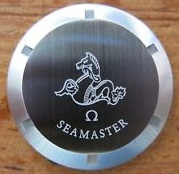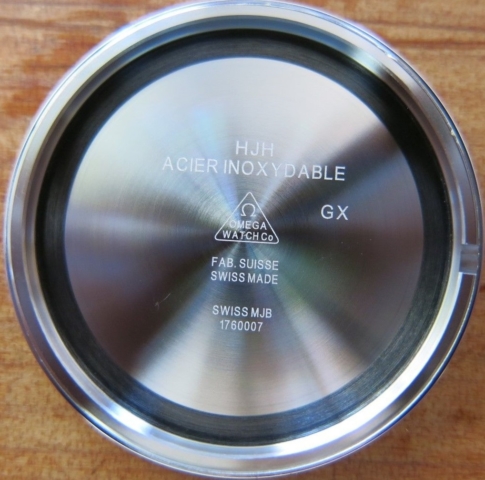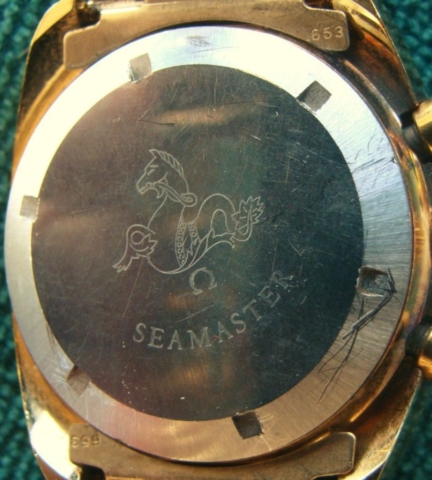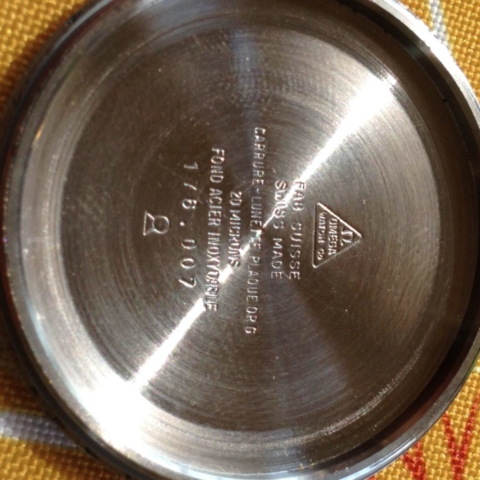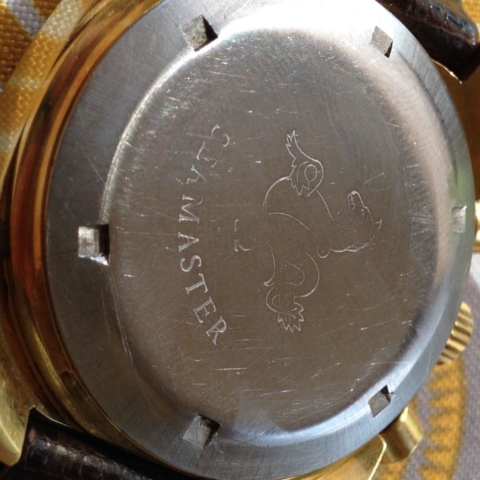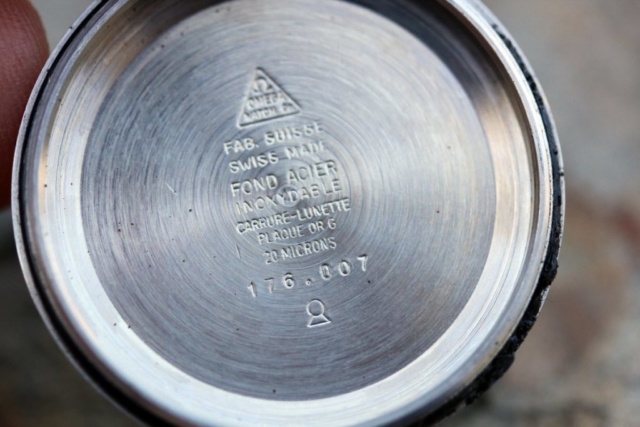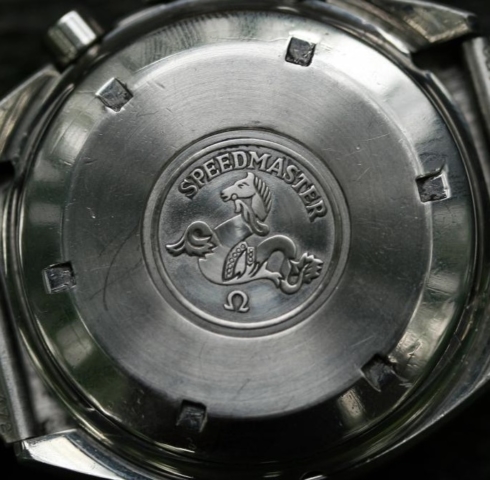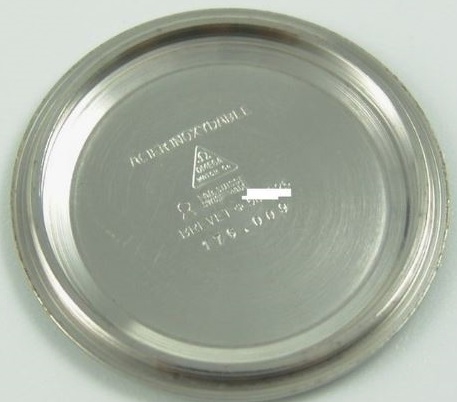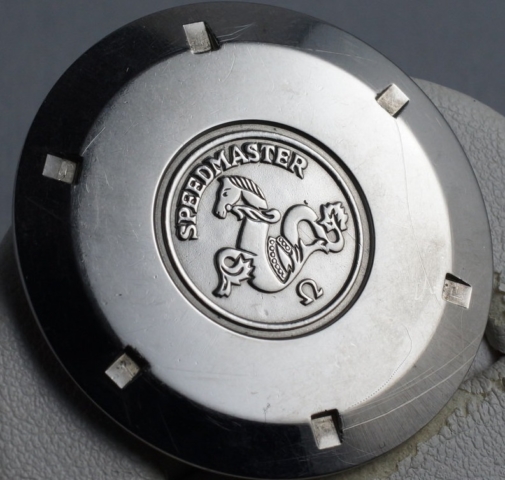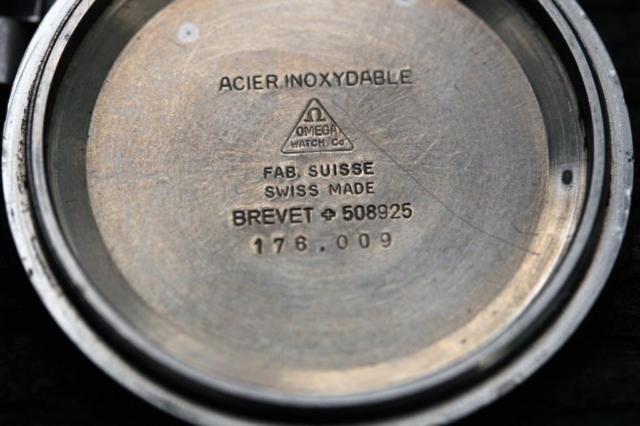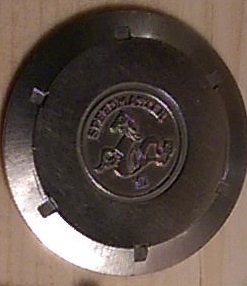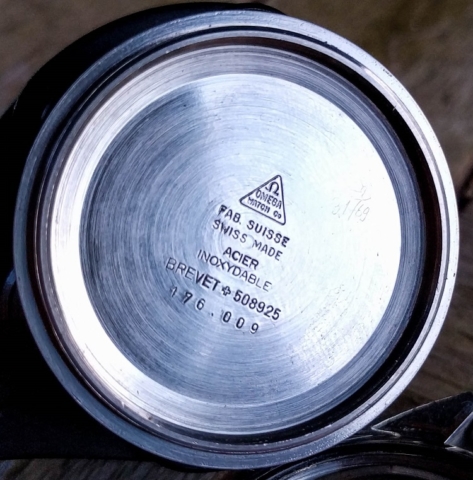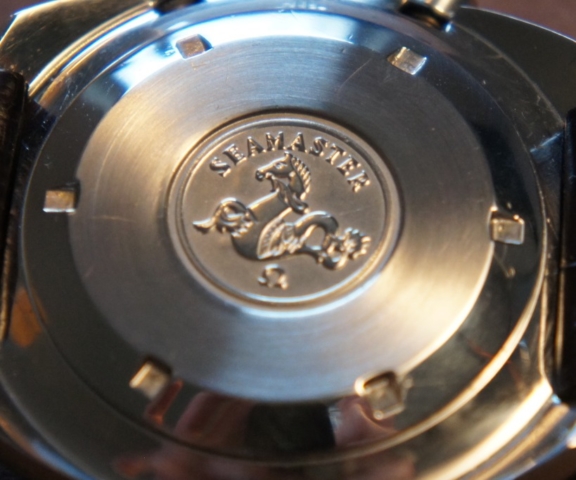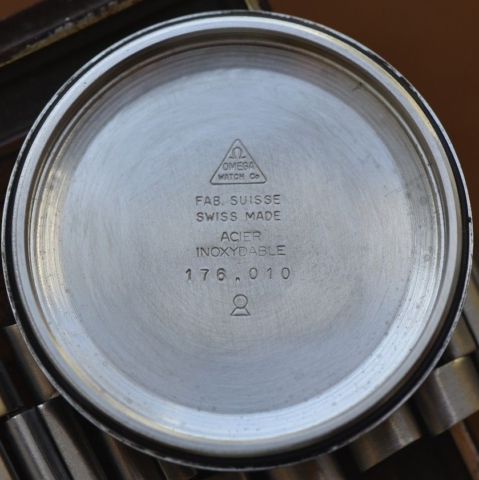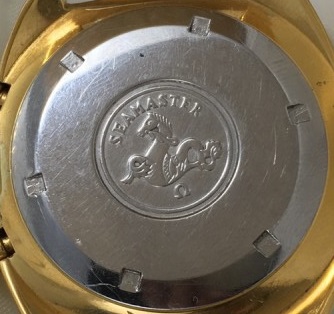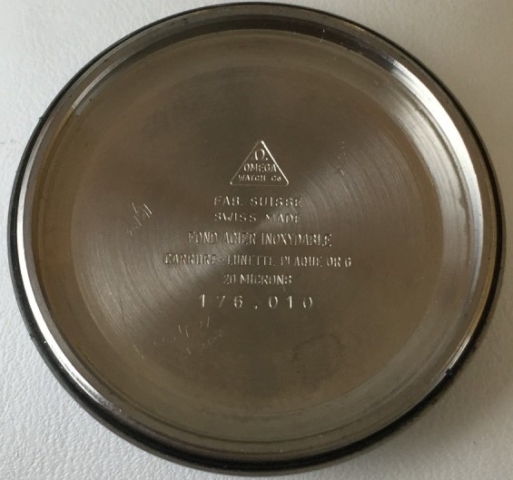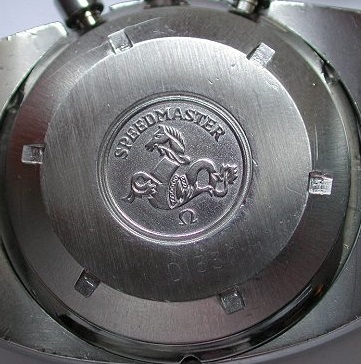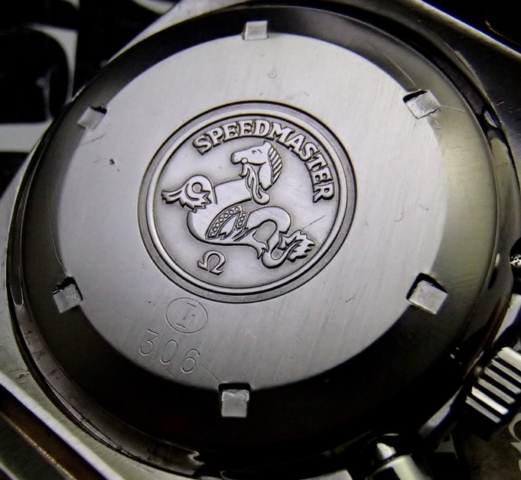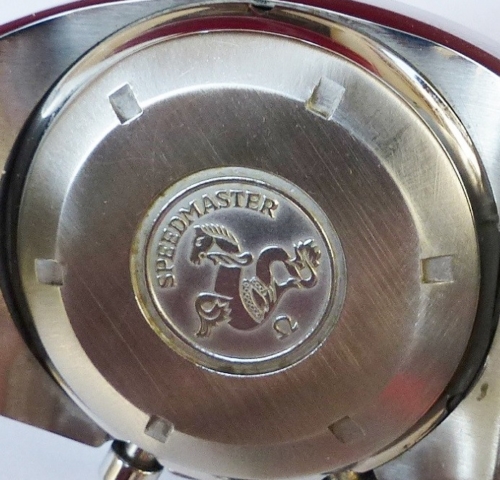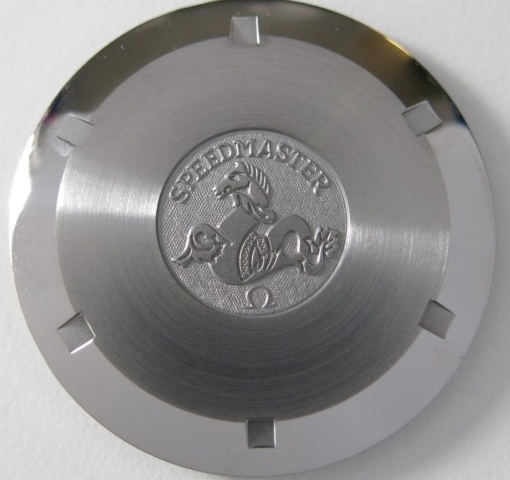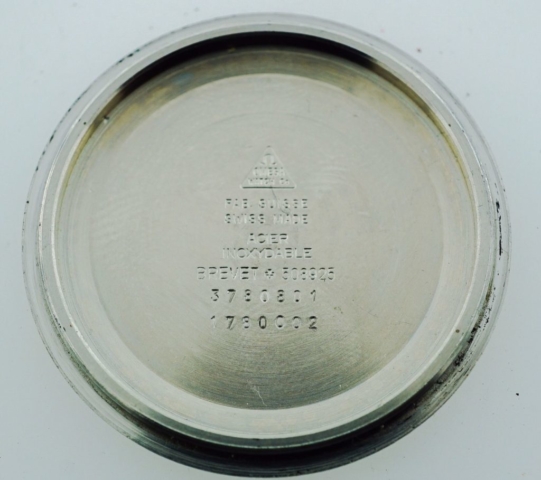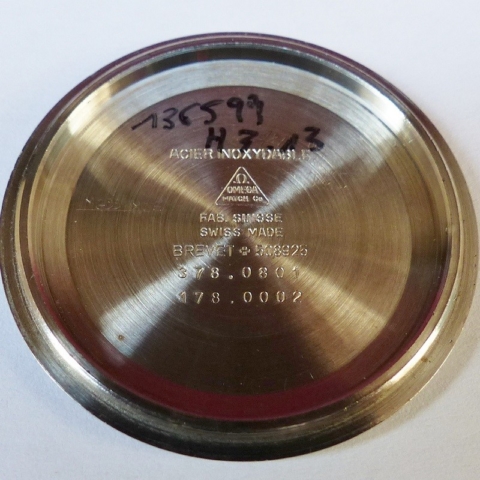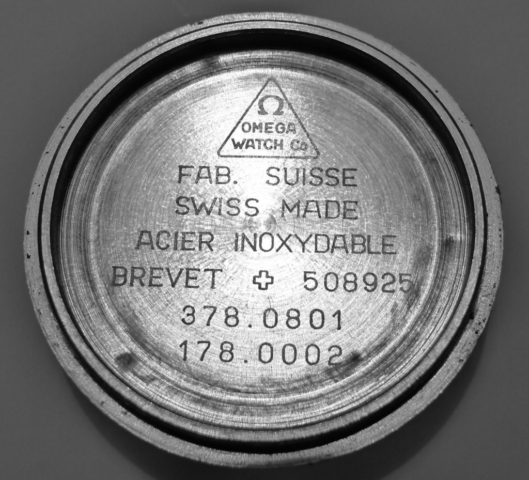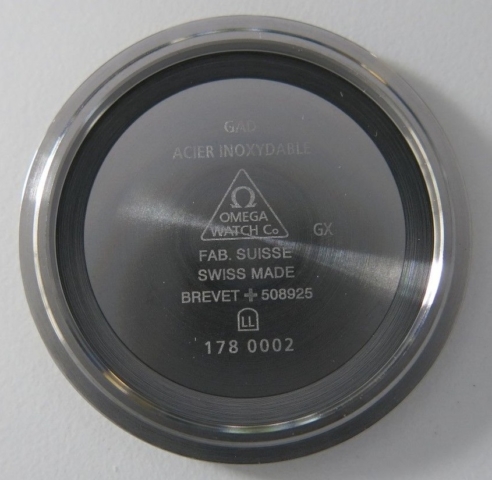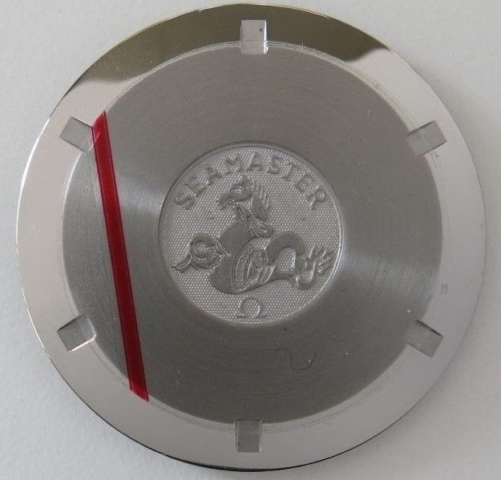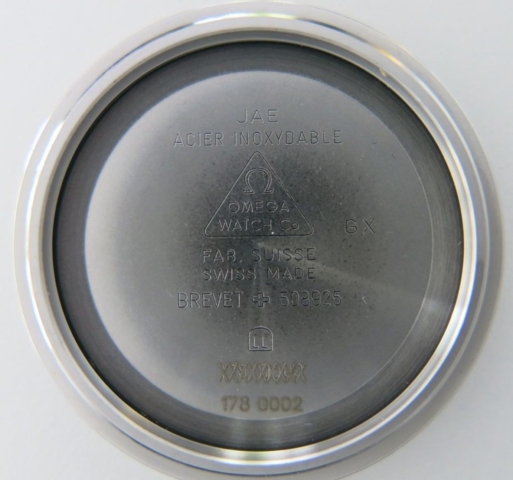Casebacks for cal. 1040 and 1041 watches are a straightforward area of study. You’re not likely to find a fake caseback, and a well-trained eye isn’t required to determine correctness of a caseback. This guide mostly includes photos to show the inside and outside of the common caseback variants. In general, there are three things that collectors should consider when evaluating a cal. 1040 or 1041 watch:
Three Considerations
Correctness – Make sure the caseback is the right one for your case. The number stamped on the inside should match the shape and style of the case. Check out the case reference guide if you are unsure. Some casebacks are compatible across references and although it is rare I have seen mismatching casebacks and cases. Yet another reason you should always ask a seller to open the watch and take pics of the movement and the inside of the caseback.
Condition – Evaluate the wear and tear on the caseback. Most of the casebacks came with lightly engraved Hippocampus logos, either large ones or smaller ones inside a circle (the Seamaster 176.010, Mark IV Speedmaster, and Speedmaster 125 all came with more detailed Hippocampus engravings). If this is missing, your watch might have been over-polished at some point. Even if the engraving is still present, look for sharp, well-defined edges around the indentations for the case back opening tool. Examples that have been polished look soft around these edges. And as always, gouges and scratches from botched strap changes and case opening attempts are fairly common.
Originality – Learn to spot service replacements. Original casebacks had the text stamped inside, while modern service casebacks use laser engraving.
What A Caseback Tells You On The Inside
The inside of a caseback contains important information. When you come across a vintage Omega watch you are unfamiliar with, opening it up is usually step one on your fact-finding mission, as it typically gives the reference number for the watch. There is other information too, and the order it is stamped can vary.
Reference Number
This identifies a particular watch or model. The format of the case reference varies by era. In the 1970s, the case reference was 6 or 7 numbers either in the XXX.XXX or XXX.XXXX format. Sometimes there was no period after the first three digits.
Occasionally you’ll see a caseback with two case references (common on the Speedmaster 125), or two references where one reference is crossed out and replaced by a different reference (seen on early 176.007s).
Case Material
This is written in French. ACIER INOXYDABLE for stainless steel, and FOND ACIER INOXYDABLE CARRURE-LUNETTE PLAQUE OR G 20 MICRONS for gold plated. It basically means the base is stainless steel, coated by 20 microns of gold.
Swiss Made
This is stamped in both English and French (FAB. SUISSE).
Omega Name and Logo
This is stamped in a small triangle in the following order: Ω WATCH Co.
Case Maker
Usually there is a symbol signifying the company that made the cases for Omega. See the following section for more information.
Patent Information
If the case has a unique feature covered by a patent, that information is sometimes present. For example. the modular case references (Speedmaster 125, Speedmaster Mark IV) contain the text: BREVET 508925, with a Swiss Cross logo before the number. (“Brevet” essentially translates to “patent”.) That text refers to the Swiss patent for that modular case design (see below).
Other Symbols
Some casebacks contain additional text that I don’t quite know the purpose of. This is mainly found on newer service parts and includes text such as GX and SWISS MJB. Please let me know if you know what this refers to.
Maker’s Marks
Casebacks are generally not all that important when selecting a watch. If the rest of the visible parts are in good shape, you can maybe let a polished or scratched caseback slide. But casebacks often carry some interesting trivia hidden on the inside – the maker’s mark.
Vertical integration is relatively new to the Swiss watch industry, and even now relatively few companies are completely “in-house”. Watch companies that put their name on the dial would often farm out the manufacturing of several parts such as bracelets, dials, and cases to other firms. Case makers of the era often put a small logo on the inside of the caseback, revealing the company Omega contracted with to supply those parts. Sometimes multiple vendors supplied cases for the same exact reference. The most famous example is with ref. 105.012 Speedmaster Professionals, where eagle-eyed collectors have learned to spot the difference between cases made by Huguenin Freres or Cenrale Boites without even opening the cases.
Ervin Piquerez SA
Ervin Piquerez SA, otherwise known as EPSA or simply Piquerez, manufactured all cases for cal. 1040 and references except for ref. 176.005. EPSA was most known for making the “Super Compressor” style of dive watch case for several watch brands including IWC, Universal Geneve, Longines, Jaeger-LeCoultre, and Vulcain in the 1960s. Those case were heralded for using the increased water pressure at depth to improve the seals and water resistance of the watch case. The EPSA cases made for the Omega 1040 family were not as water resistant.
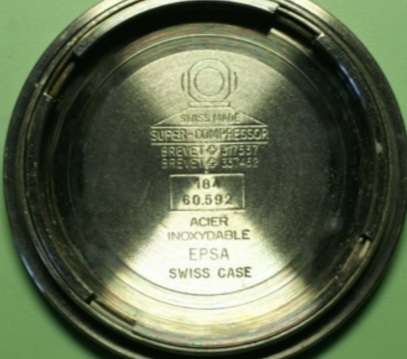
Because dive watch cases were their claim to fame, EPSA’s logo was a stylized diving bell. The logo was more elaborate on their diver cases, but on Omega’s it was relatively simple and the name “EPSA” wasn’t mentioned.
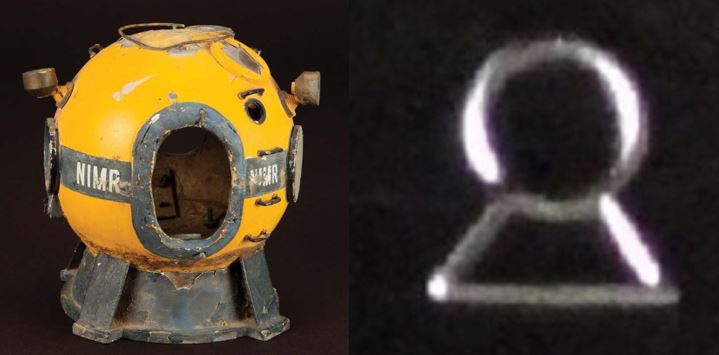
EPSA manufactured several iconic cases for Omegas in the 1960s and 1970s, including the Flightmasters, Memomatics, the Speedmaster Mark II, Soccer Timers, the real Jedi, the SHOM diver, the Speedsonic Lobster and the Speedmaster “Mark 4.5”. As far as I can tell, all the “pilot” style cases were EPSA-produced.
Modular Cases With “BREVET 508925”
Reference 176.009 and 378.0801 are “modular” designs, which feature the chunky outer case that can be separated from the inner case that holds the movement, dial and hands. The inner case includes the crystal on the top and the screw-in caseback on the bottom. These cases state “Brevet 508925”, which is the Swiss patent in Ervin Piquerez’ name for an “improved wristwatch casing”. Not all of the 176.009 casebacks, and none of the Speedmaster 125 casebacks have a diving bell logo, but all of them, including service parts, say “Brevet 508925”, indicating they are EPSA cases.

The Omega “Mark 4.5”, ref. 176.0012 and the Speedsonic Lobster were among the other modular Omegas that carried the 508925 marking, as were some other non-Omegas including the Breitling Soccer Timer.
Jean Vallon
Information on this firm was harder to come by. This company’s stamp appears to be a stylized fish, to my eye more specifically a narwhal. The cases for ref. 176.005, both in steel and in gold plate, were made by Vallon. I haven’t noticed other Omegas of this era with this stamp, but there were possibly others.

Louis Lang SA
This company has been making Swiss watch cases for decades. They make some modern service casebacks for Omega including for the Speedmaster 125, and their logo looks like a gravestone with the letters “LL” inside.

Photos By Reference
As you will see, there are some slight variations for some references. In most cases, I don’t know the sequence these variants were released or if there was an order at all. I don’t know why they changed either. I do not believe the minor variations of the older styles impact value.
176.001
Maker: EPSA (diving bell symbol)
Caseback design: Circle surrounding lightly engraved SEAMASTER, Hippocampus logo, Omega symbol
176.002
Notice that despite being a Speedmaster, both caseback variants say “Seamaster”. Remember that the Speedmaster family is an offshoot of the Seamaster family.
Variant 1
Maker: EPSA (diving bell symbol)
Caseback design: Circle surrounding lightly engraved SEAMASTER, Hippocampus logo, Omega symbol
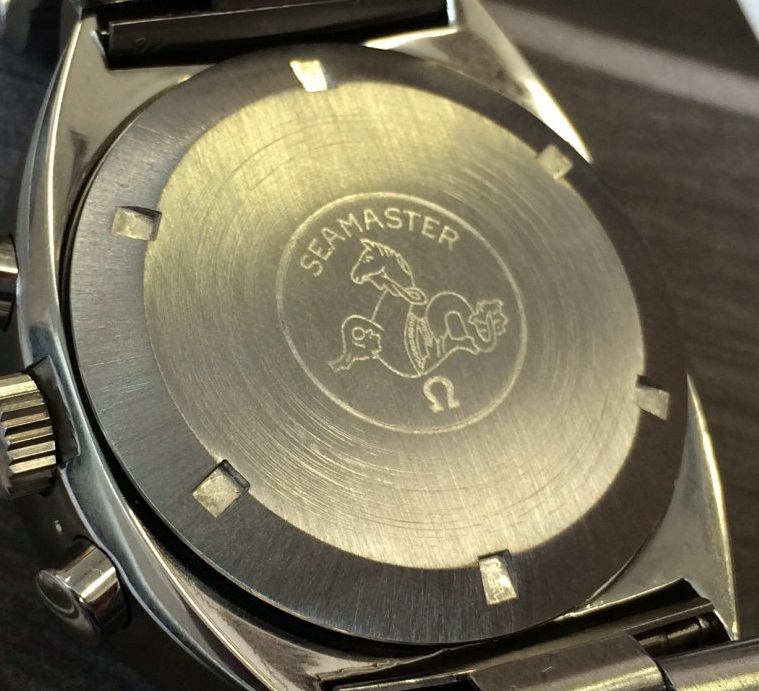

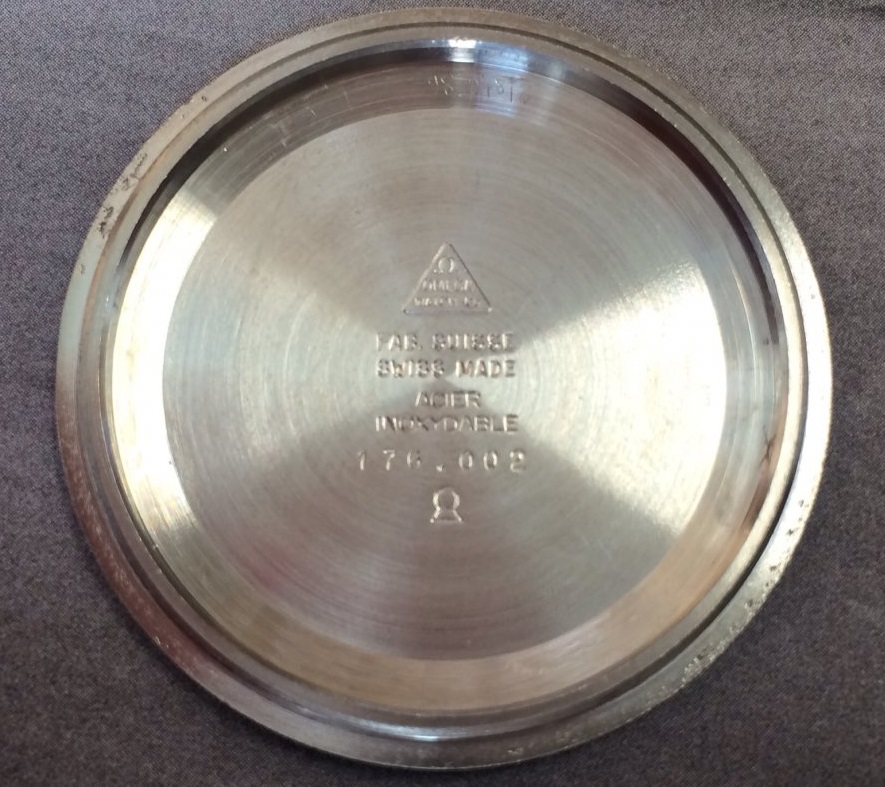

Variant 2
Maker: EPSA (diving bell symbol)
Caseback design: Larger lightly engraved Hippocampus logo, Omega symbol, SEAMASTER
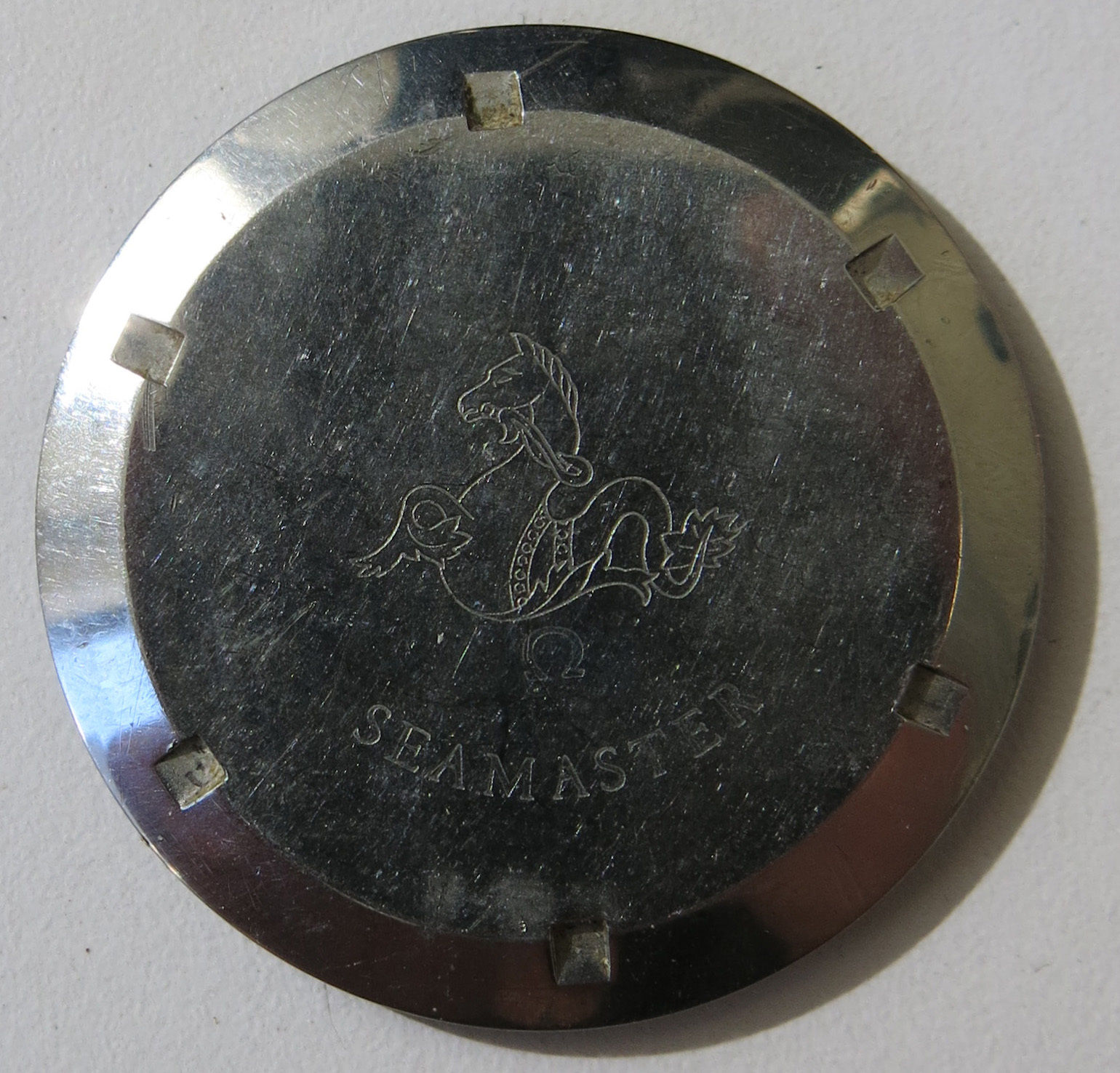

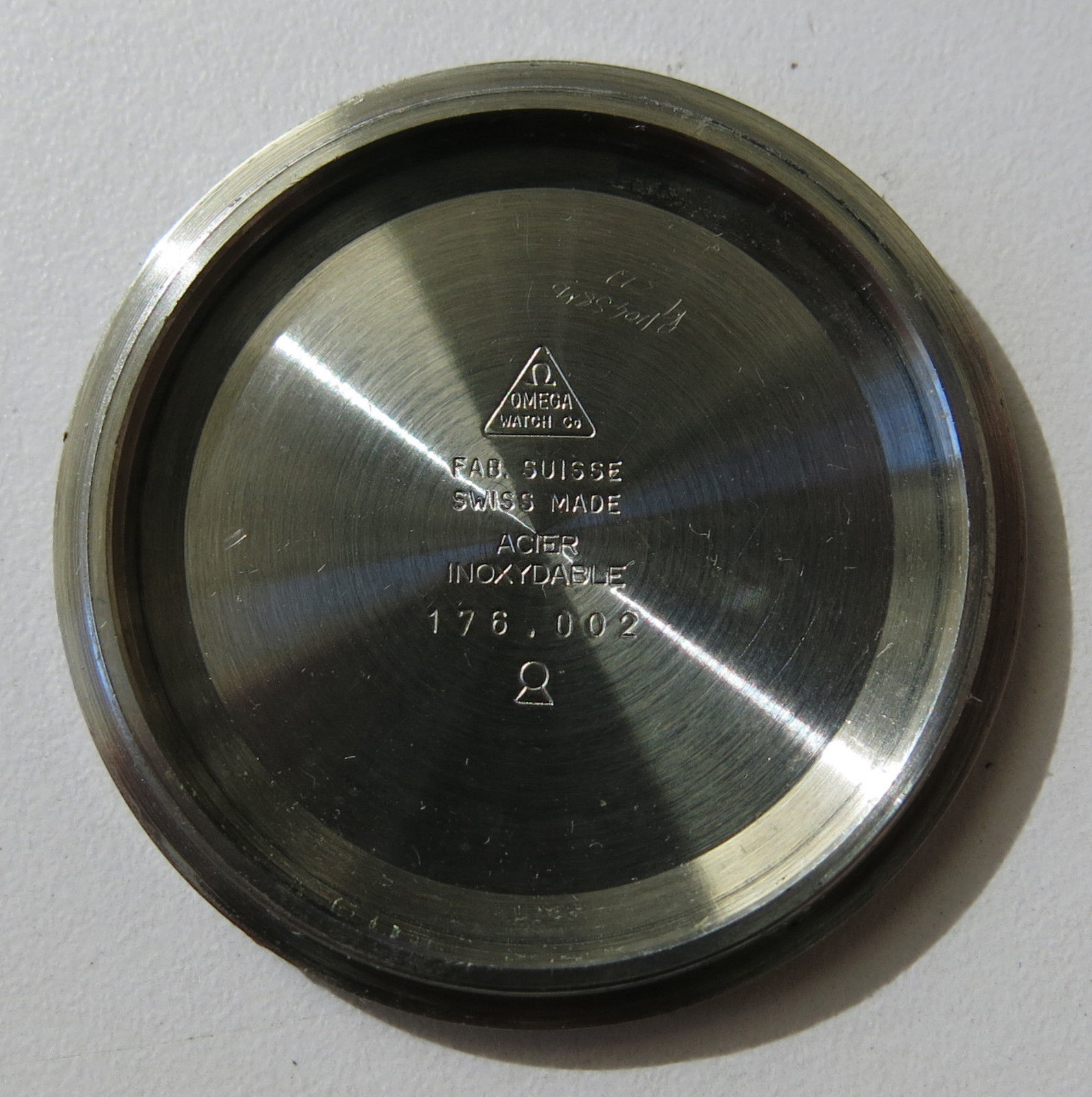

176.004
Maker: EPSA (diving bell symbol)
Caseback design: Larger lightly engraved Hippocampus logo, Omega symbol, SEAMASTER
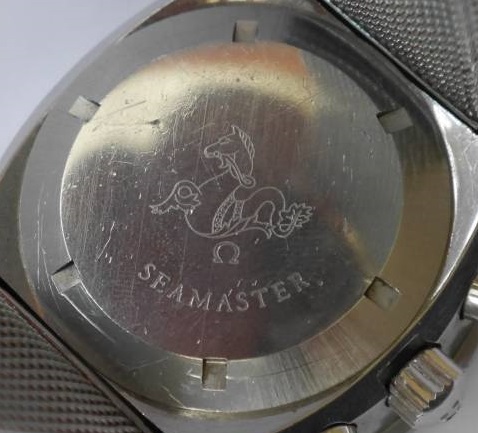

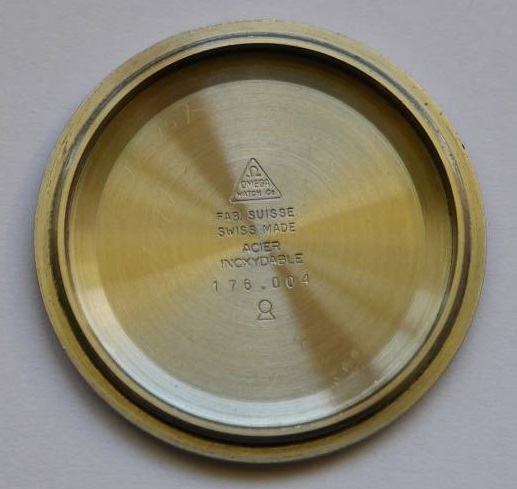

176.005 Steel
Maker: Jean Vallon (fish/narwhal symbol)
Caseback design: Circle surrounding lightly engraved SEAMASTER, Hippocampus logo, Omega symbol
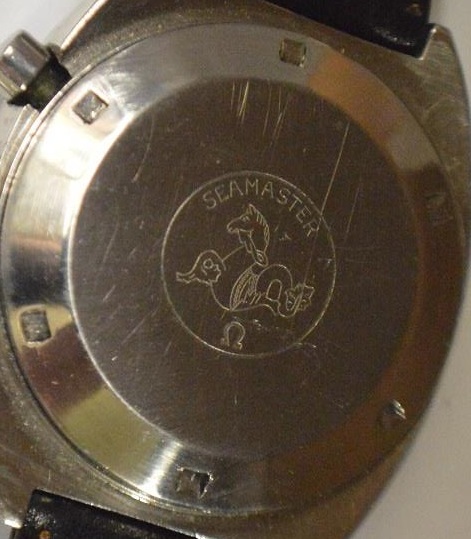

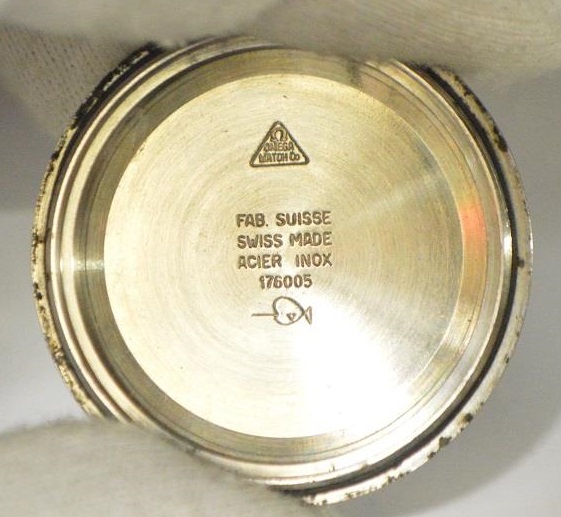

176.005 Gold Plated
Both variants of the gold-plated 176.005 I have seen are identical on the outside, but the inner caseback is varies based on the order of the text and symbols.
Variant 1
Maker: Jean Vallon (fish/narwhal symbol)
Caseback design: Circle surrounding lightly engraved SEAMASTER, Hippocampus logo, Omega symbol
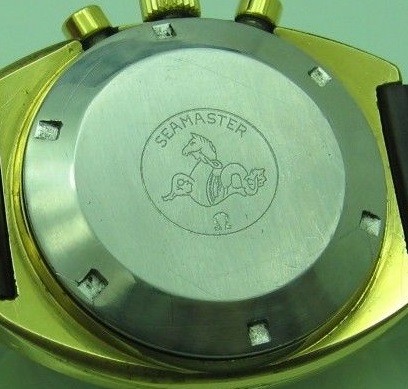

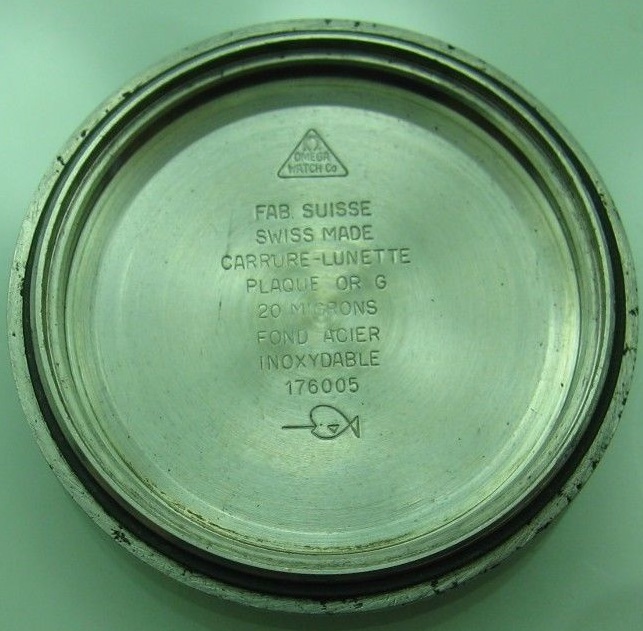

Variant 2
Maker: Jean Vallon (fish/narwhal symbol)
Caseback design: Circle surrounding lightly engraved SEAMASTER, Hippocampus logo, Omega symbol
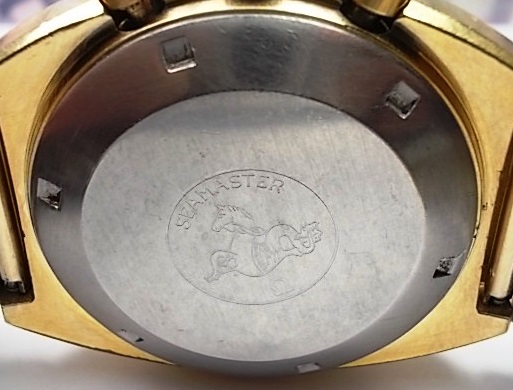

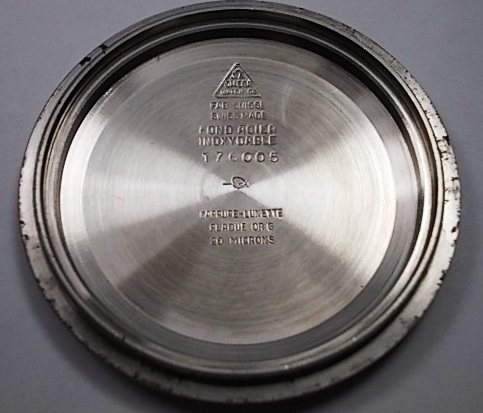

176.007 Steel
Reference 176.001 was phased out quickly, and evidently the remaining casebacks were re-purposed for use in ref. 176.007. Once those casebacks were used up all future 176.007 casebacks only included the single reference. There are two variants of the later “single reference” 176.007 caseback which differ by the order of the text inside the caseback.
Variant 1 – Early Version – Double Reference 176.001
Maker: EPSA (diving bell symbol)
Caseback design: Circle surrounding lightly engraved SEAMASTER, Hippocampus logo, Omega symbol
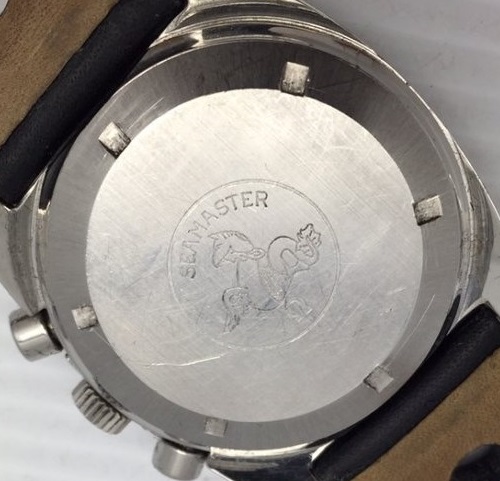

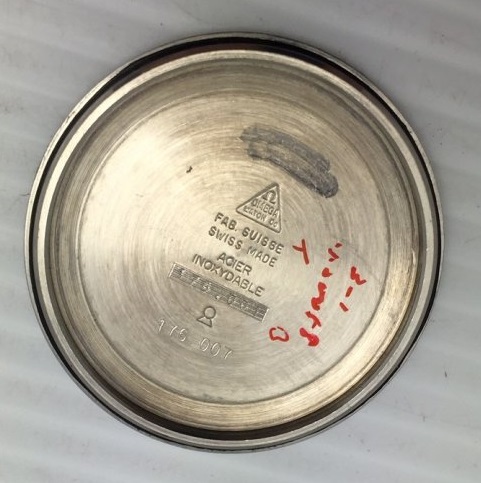

Variant 2
Maker: EPSA (diving bell symbol)
Caseback design: Circle surrounding lightly engraved SEAMASTER, Hippocampus logo, Omega symbol
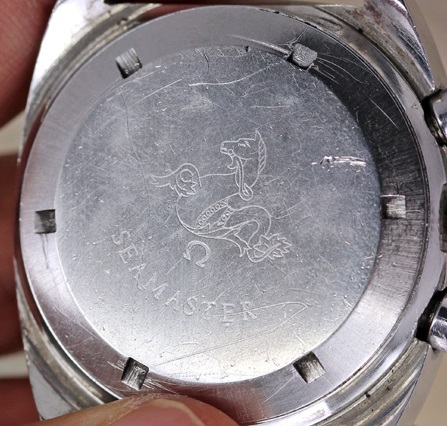

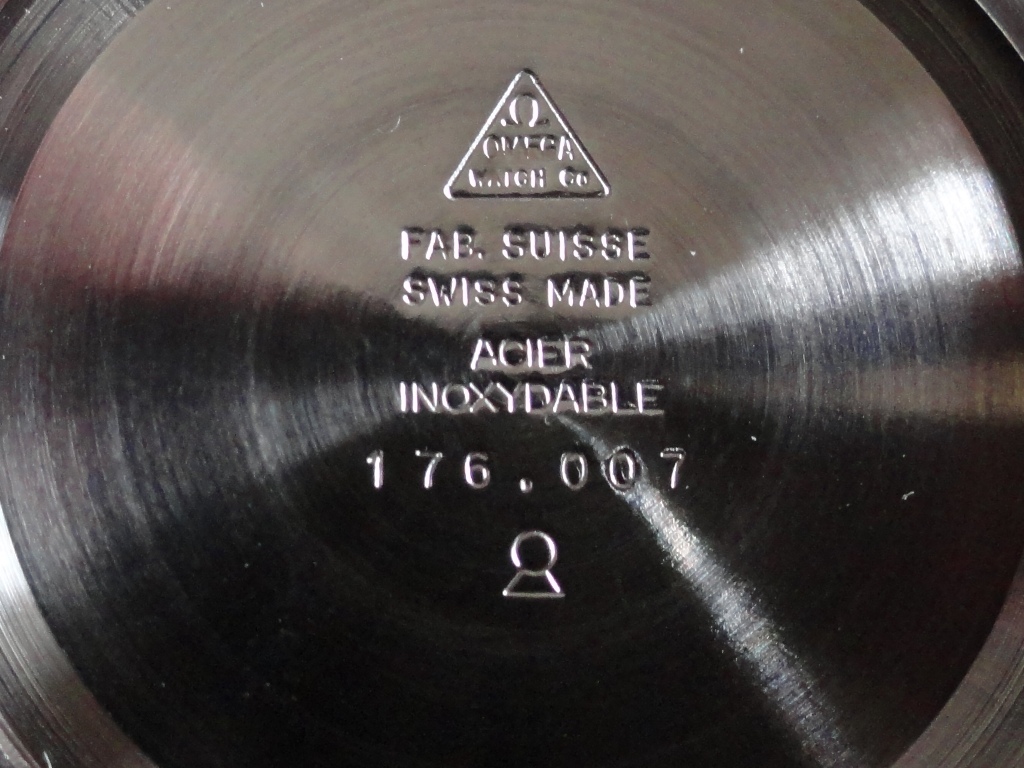

Variant 3
Maker: EPSA (diving bell symbol)
Caseback design: Larger lightly engraved Hippocampus logo, Omega symbol, SEAMASTER
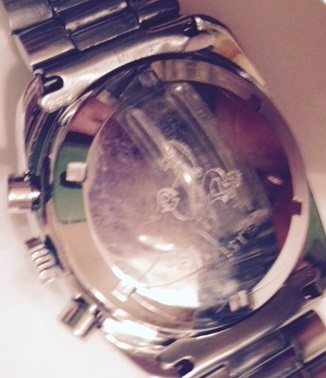

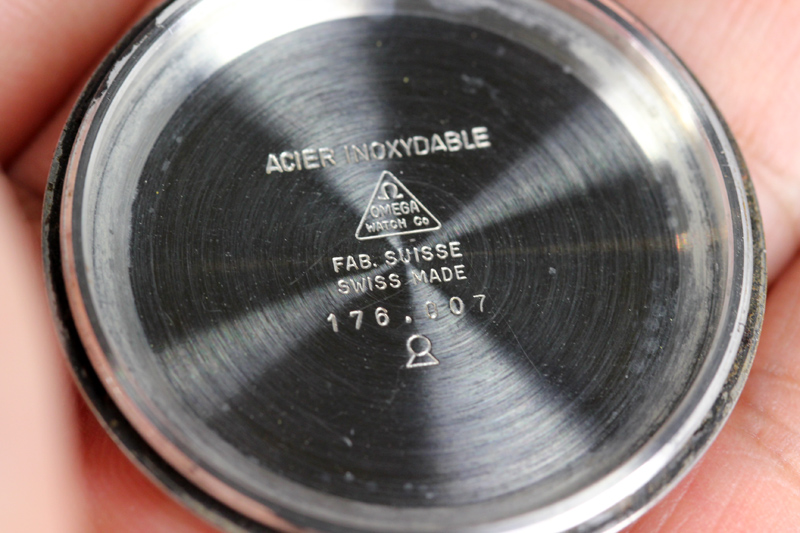

Variant 4 – Modern Service Part
Maker: Unknown
Caseback design: Larger sharply engraved Hippocampus logo, Omega symbol, SEAMASTER
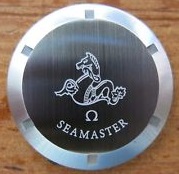

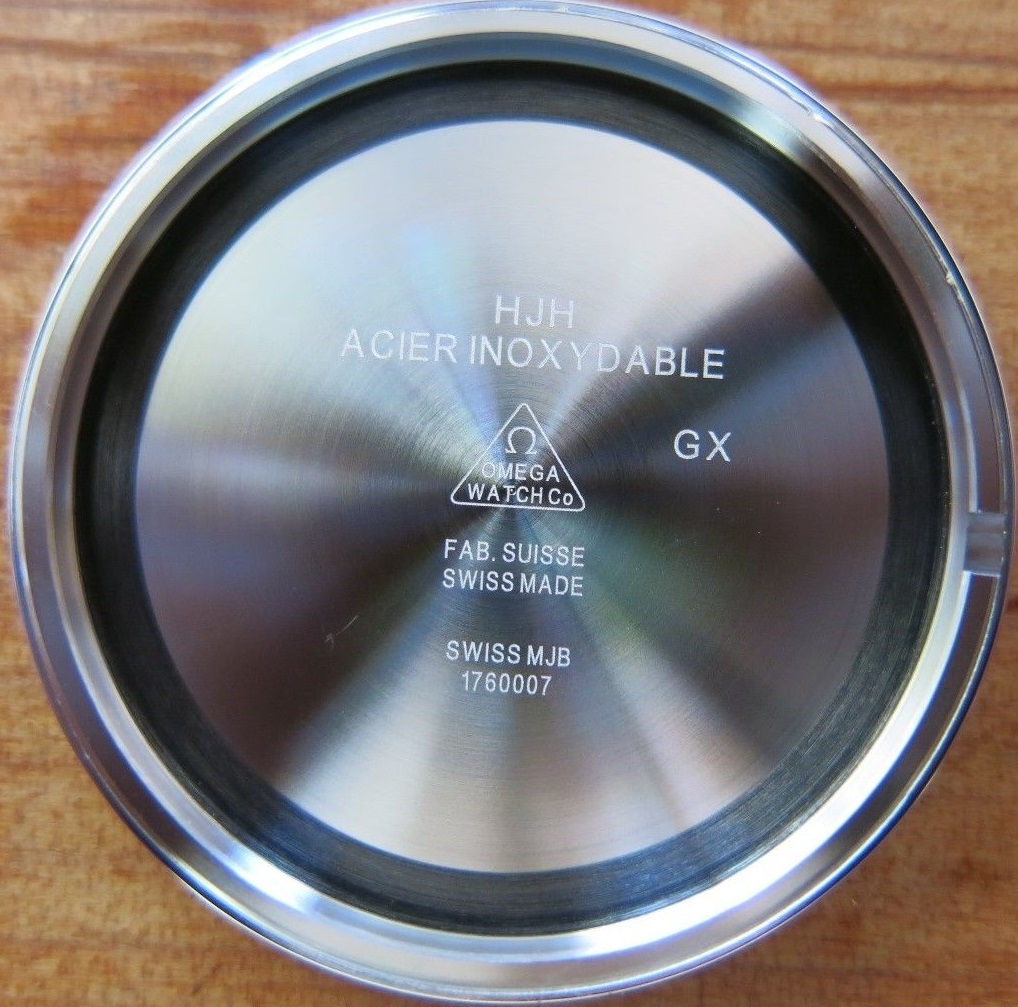

176.007 Gold Plated
176.007 MD casebacks are identical on the outside, but the insides differ based on text order.
Variant 1
Maker: EPSA (diving bell symbol)
Caseback design: Larger lightly engraved Hippocampus logo, Omega symbol, SEAMASTER
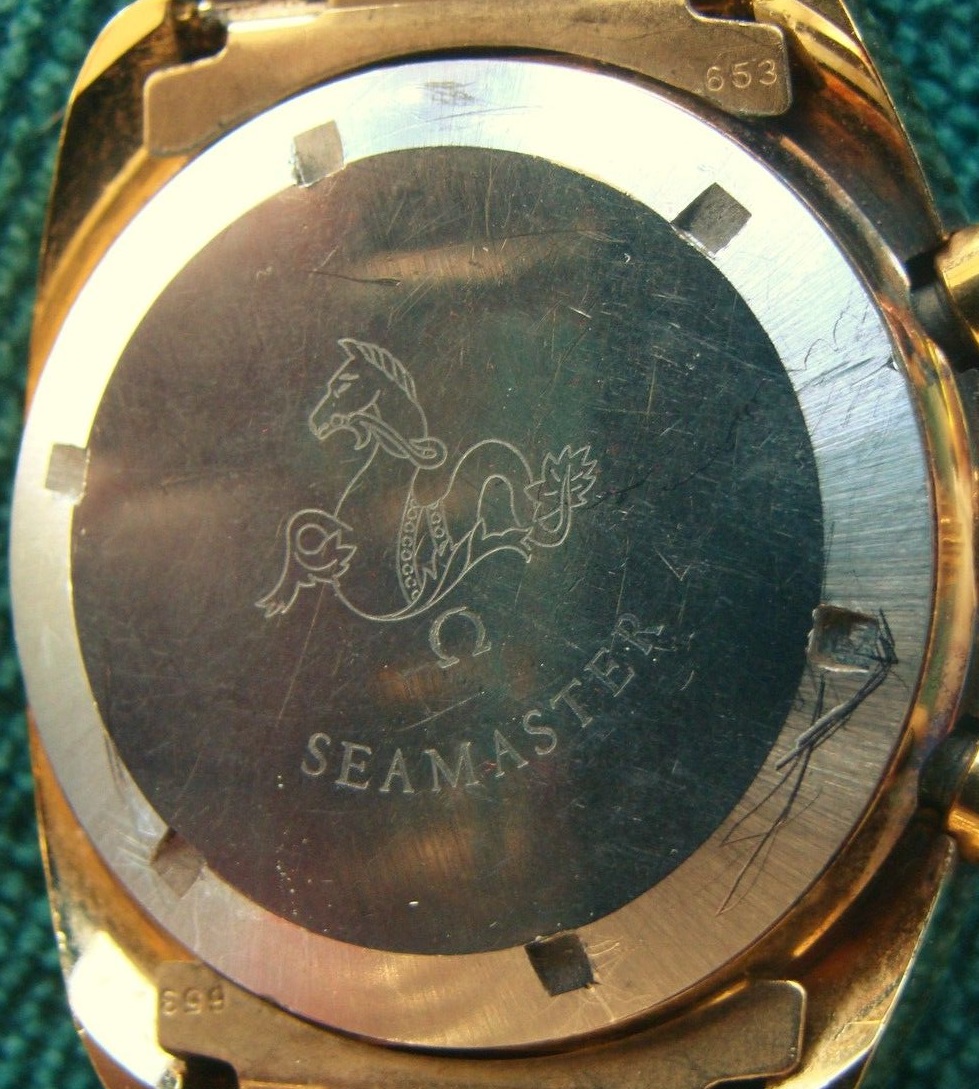

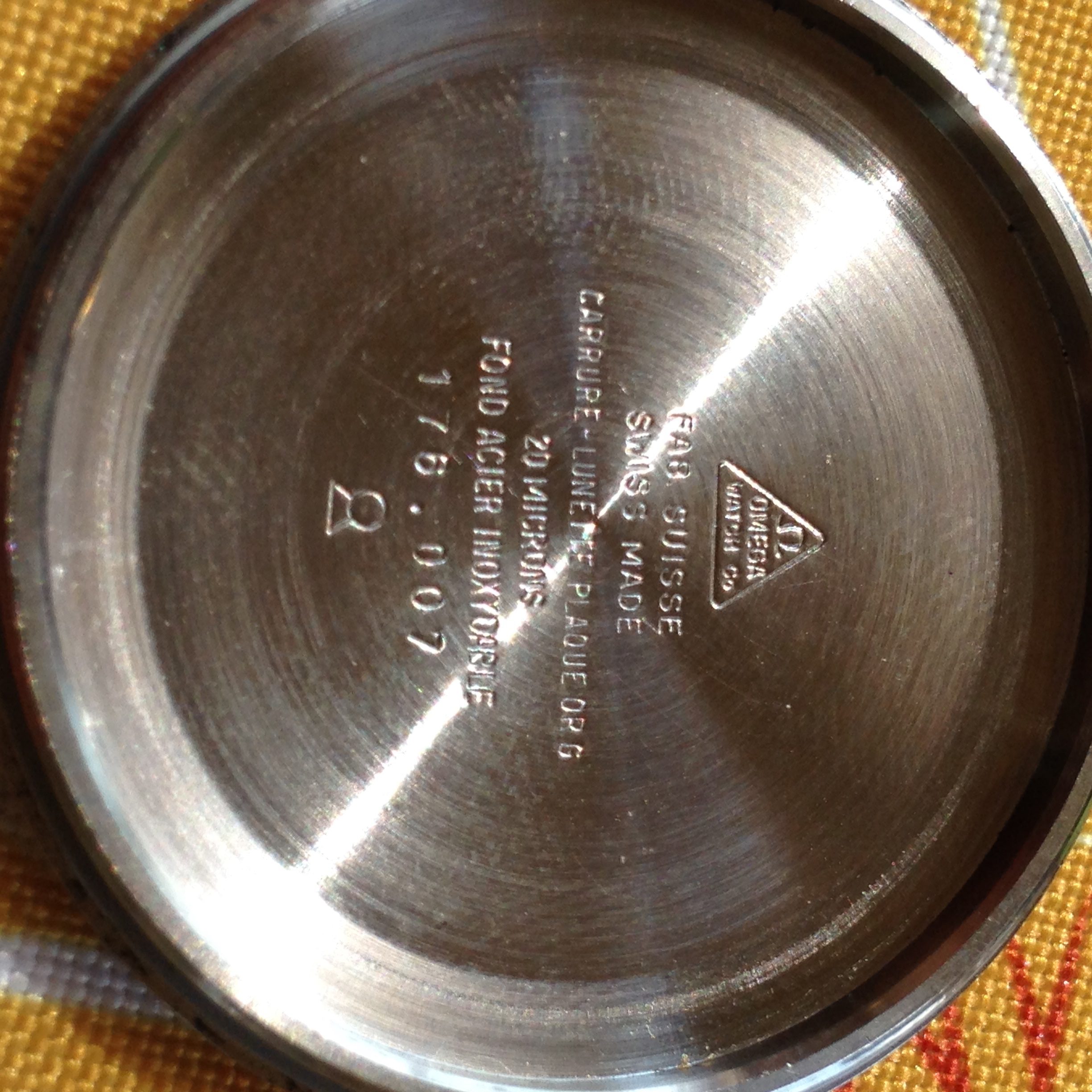

Variant 2
Maker: EPSA (diving bell symbol)
Caseback design: Larger lightly engraved Hippocampus logo, Omega symbol, SEAMASTER
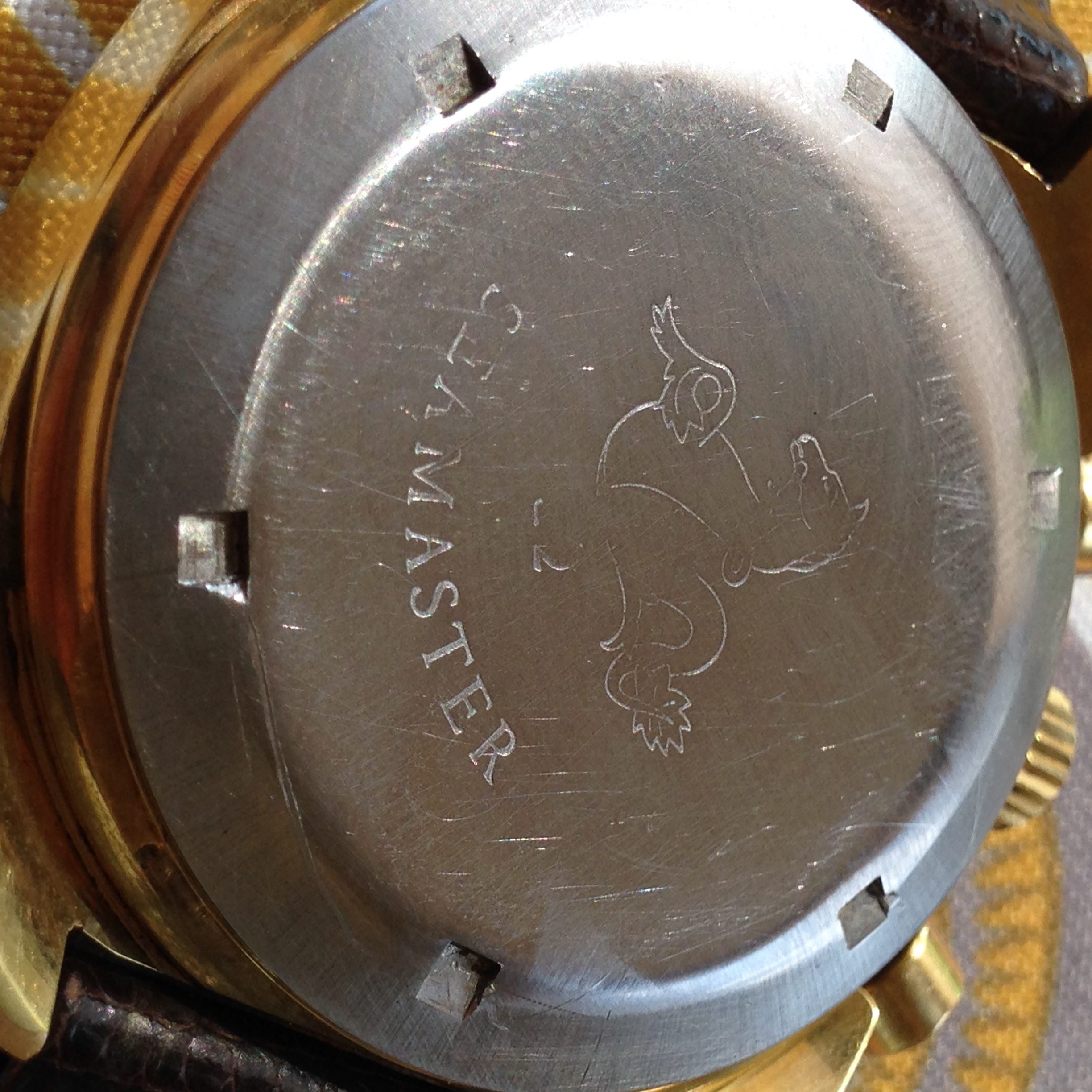

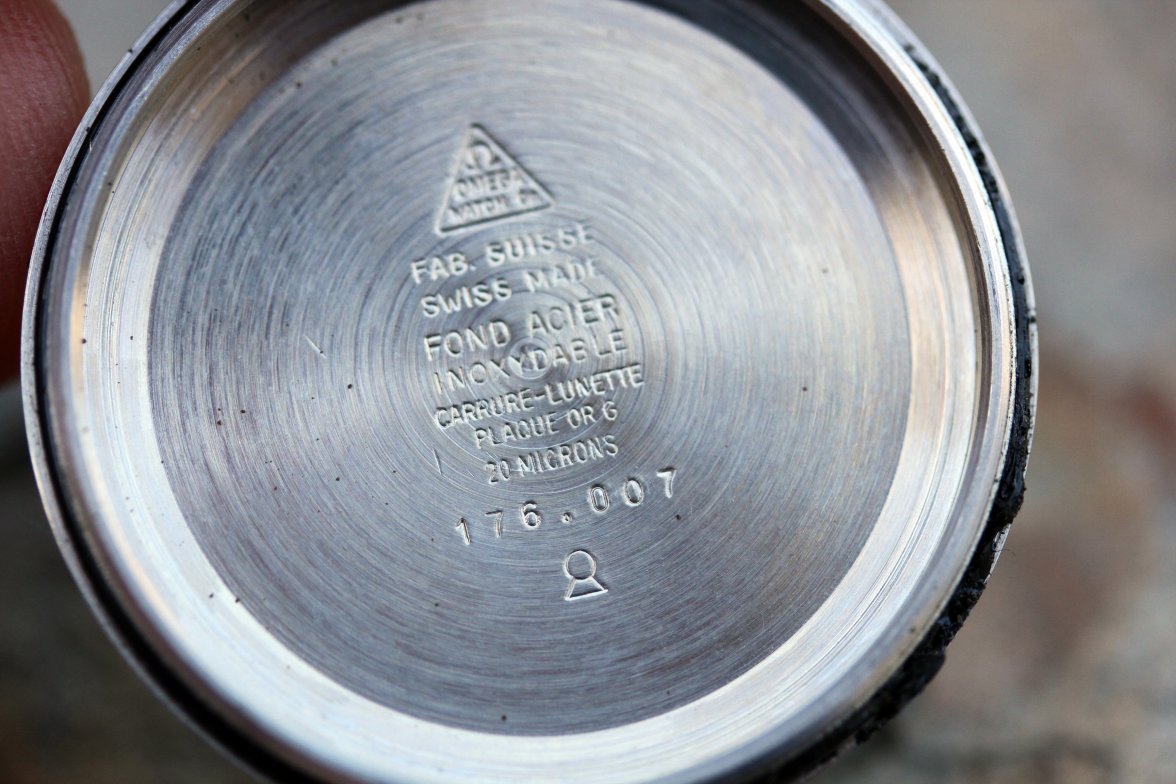

176.009
Mark IV casebacks are the same on the outside, but multiple versions of the inside exist. The first variant has a EPSA / diving bell logo, the other two do not and differ by the order of the text.
Variant 1
Maker: EPSA (diving bell symbol)
Caseback design: High-relief engraved medallion SPEEDMASTER, Hippocampus logo, Omega symbol
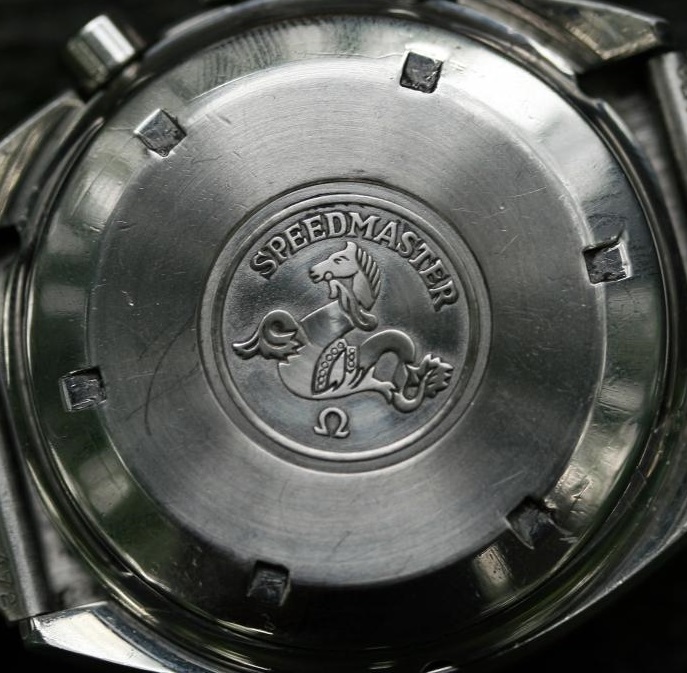

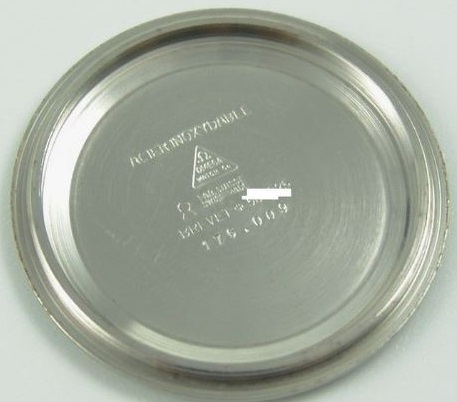

Variant 2
Maker: EPSA (no diving bell symbol)
Caseback design: High-relief engraved medallion SPEEDMASTER, Hippocampus logo, Omega symbol


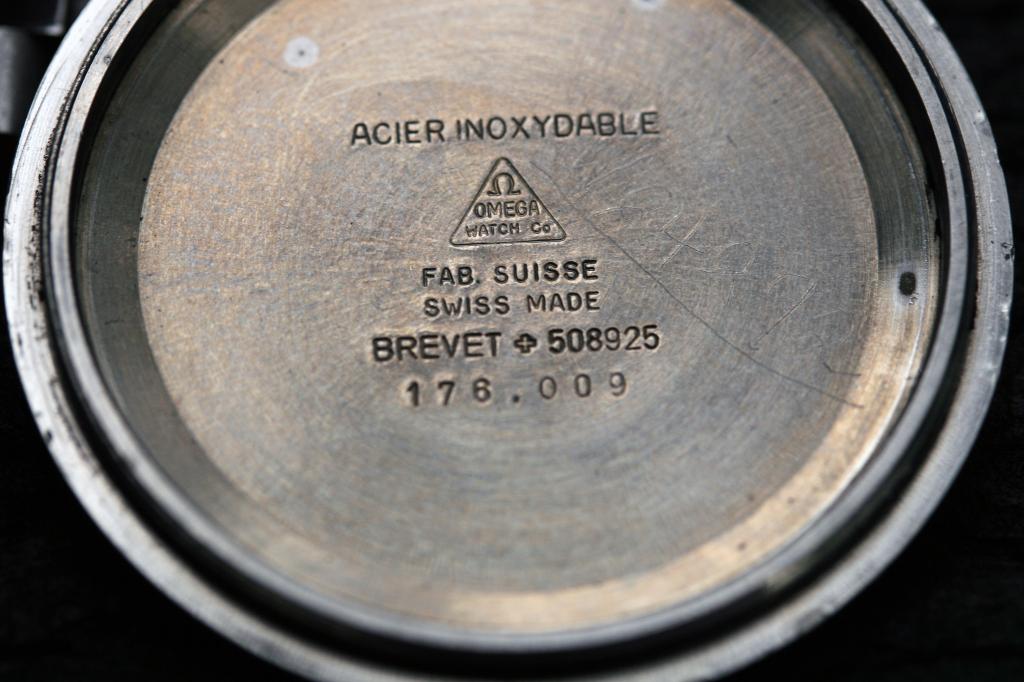

Variant 3
Maker: EPSA (no diving bell symbol)
Caseback design: High-relief engraved medallion SPEEDMASTER, Hippocampus logo, Omega symbol
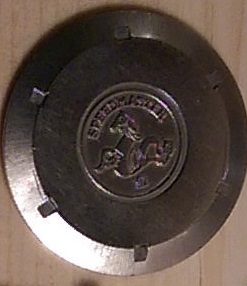



176.010 Steel
Maker: EPSA (diving bell symbol)
Caseback design: High-relief engraved medallion SEAMASTER, Hippocampus logo, Omega symbol
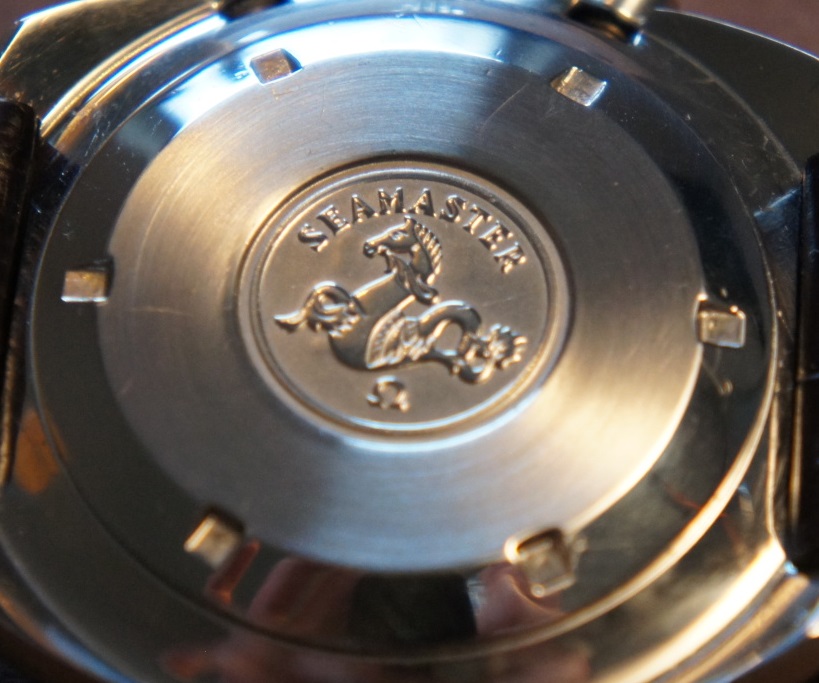

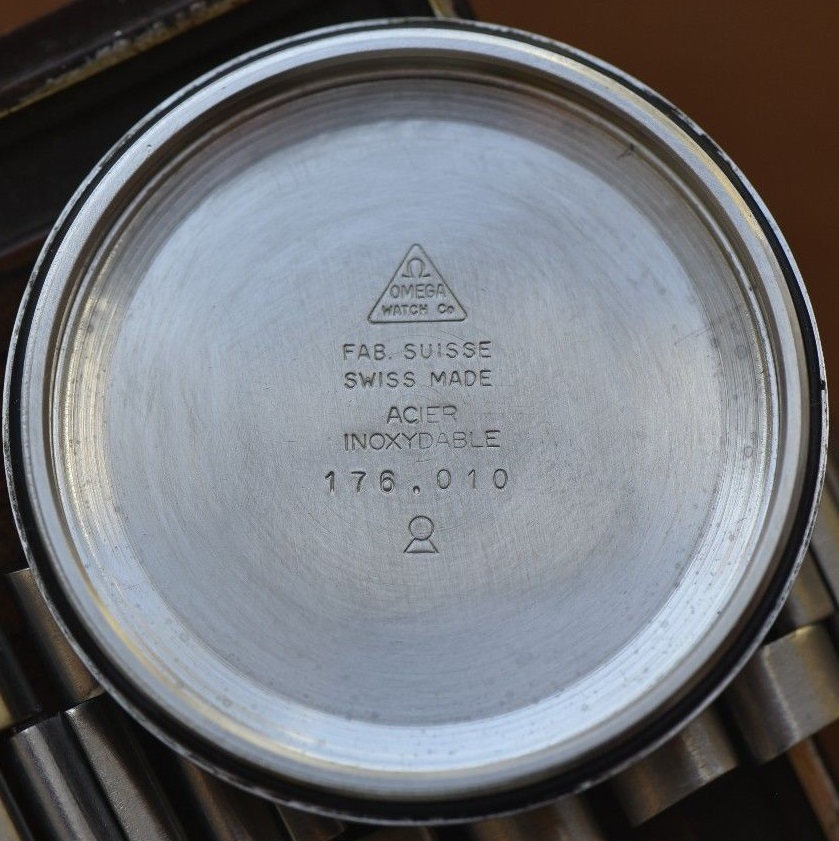

176.010 Gold Plated
Maker: EPSA (diving bell symbol)
Caseback design: High-relief engraved medallion SEAMASTER, Hippocampus logo, Omega symbol
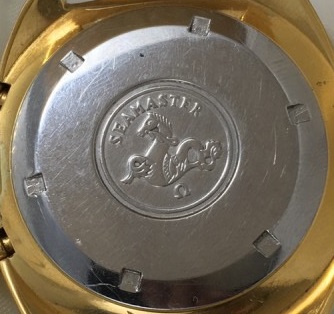

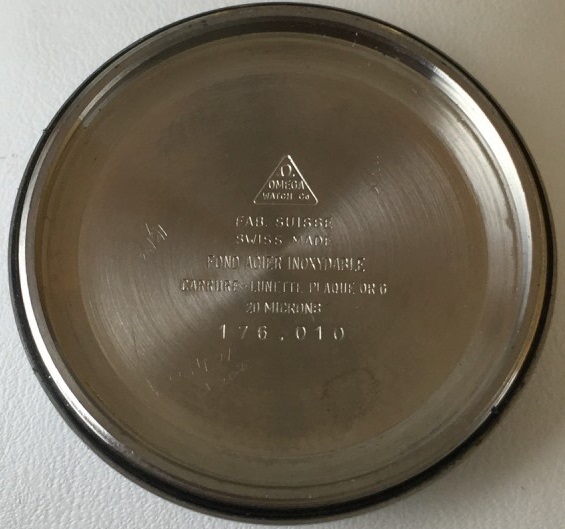

378.0801
There are several versions of Speedmaster 125 casebacks that vary by what is on the inside. Certain earlier Speedmaster 125s have an alphanumeric code on the caseback consisting of a letter followed by 3 numbers. Otherwise the caseback design is the same.
Rather than showing front/back photos of all the variants, I’ll run through the different outsides, then the different insides.
Maker: EPSA (no diving bell symbol), later service cases by Louis Lang SS (gravestone-shaped symbol with LL)
Caseback design: High-relief engraved medallion SPEEDMASTER, Hippocampus logo, Omega symbol
Outside Caseback Variants
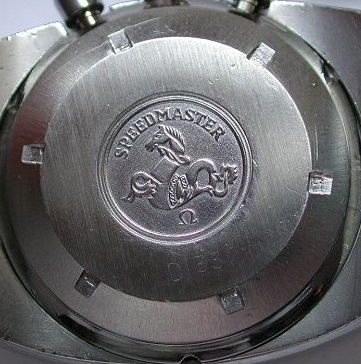

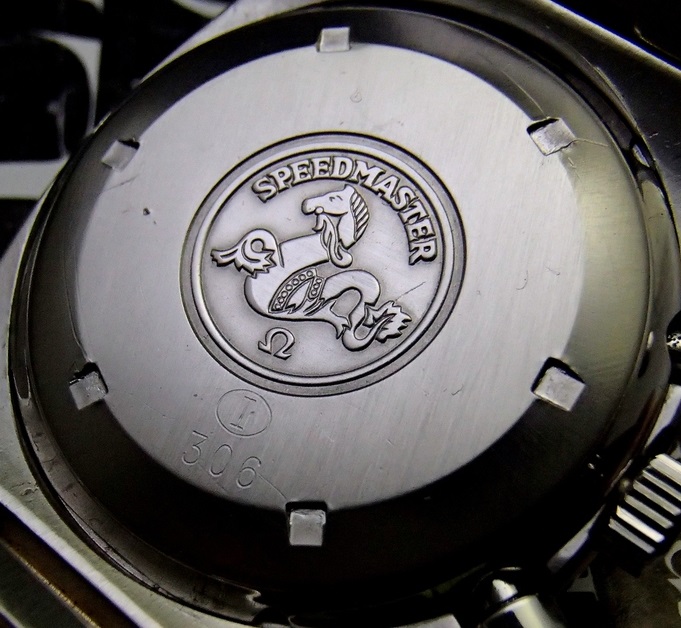

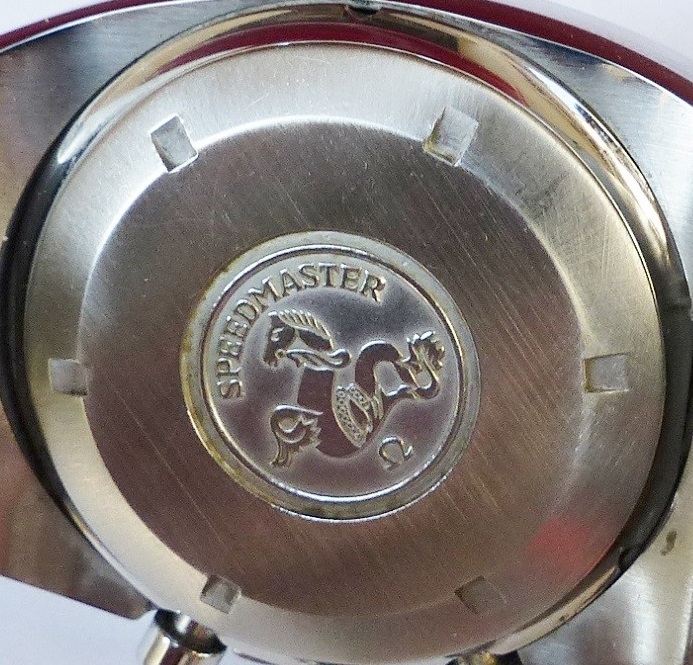

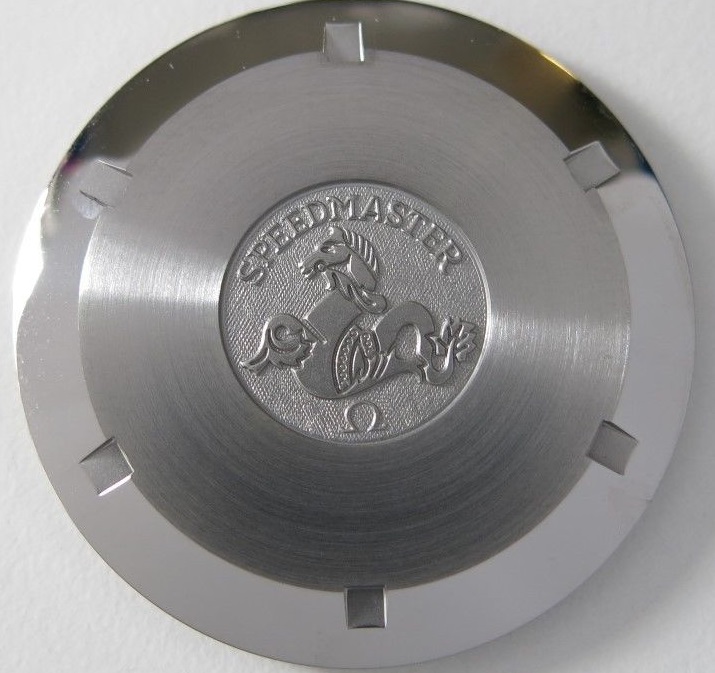

Inside Caseback Variants
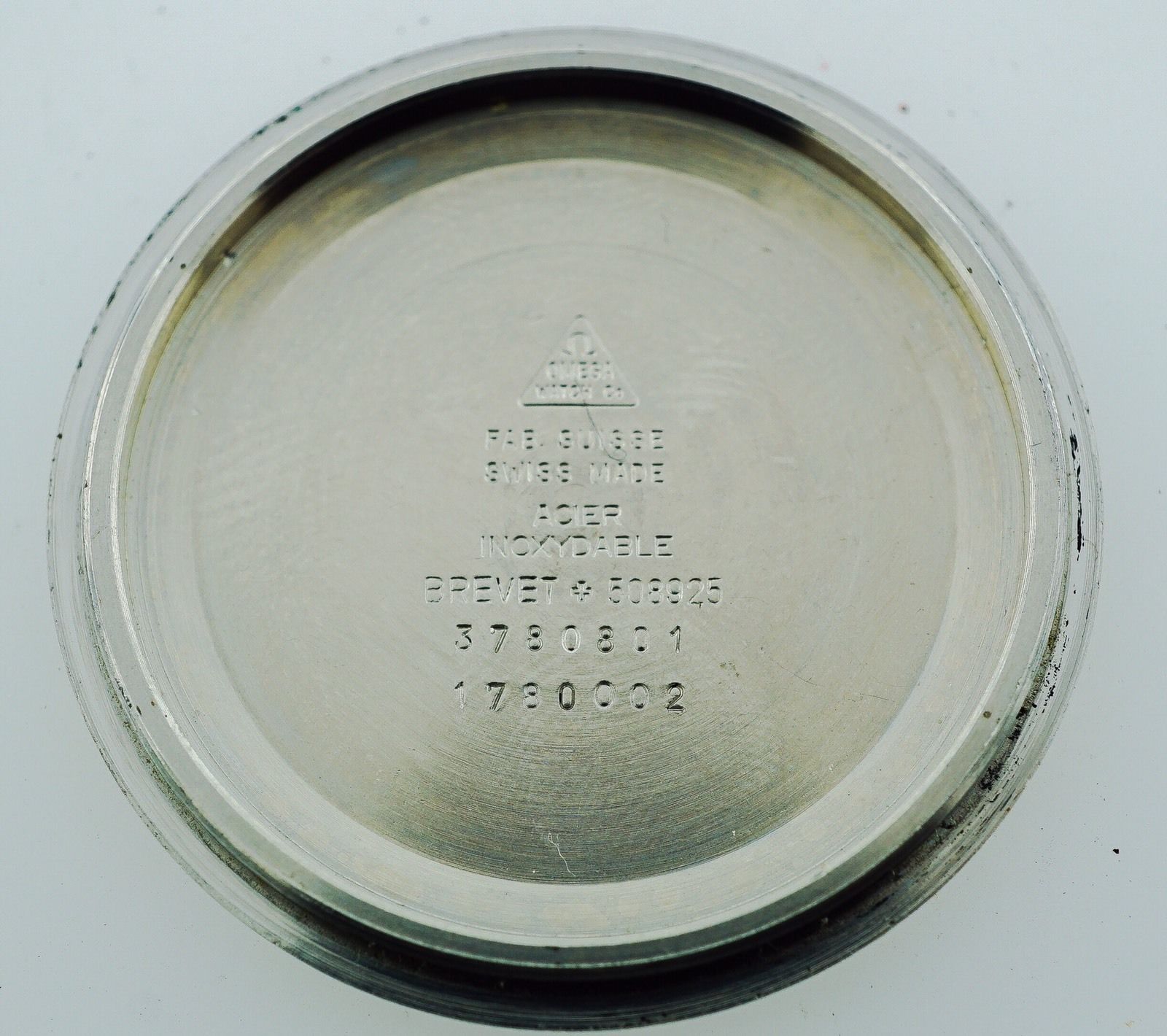

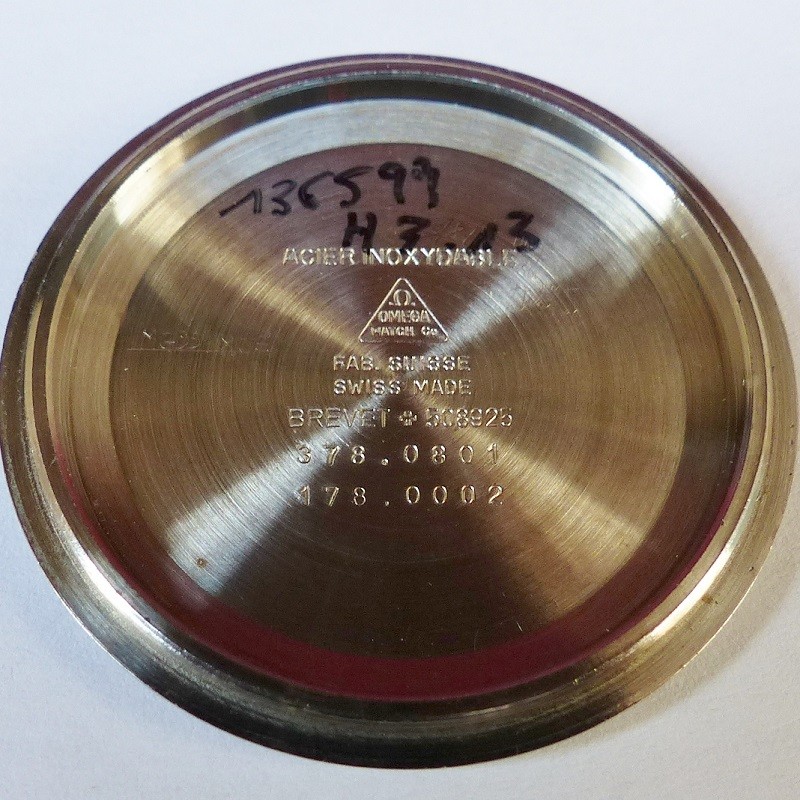

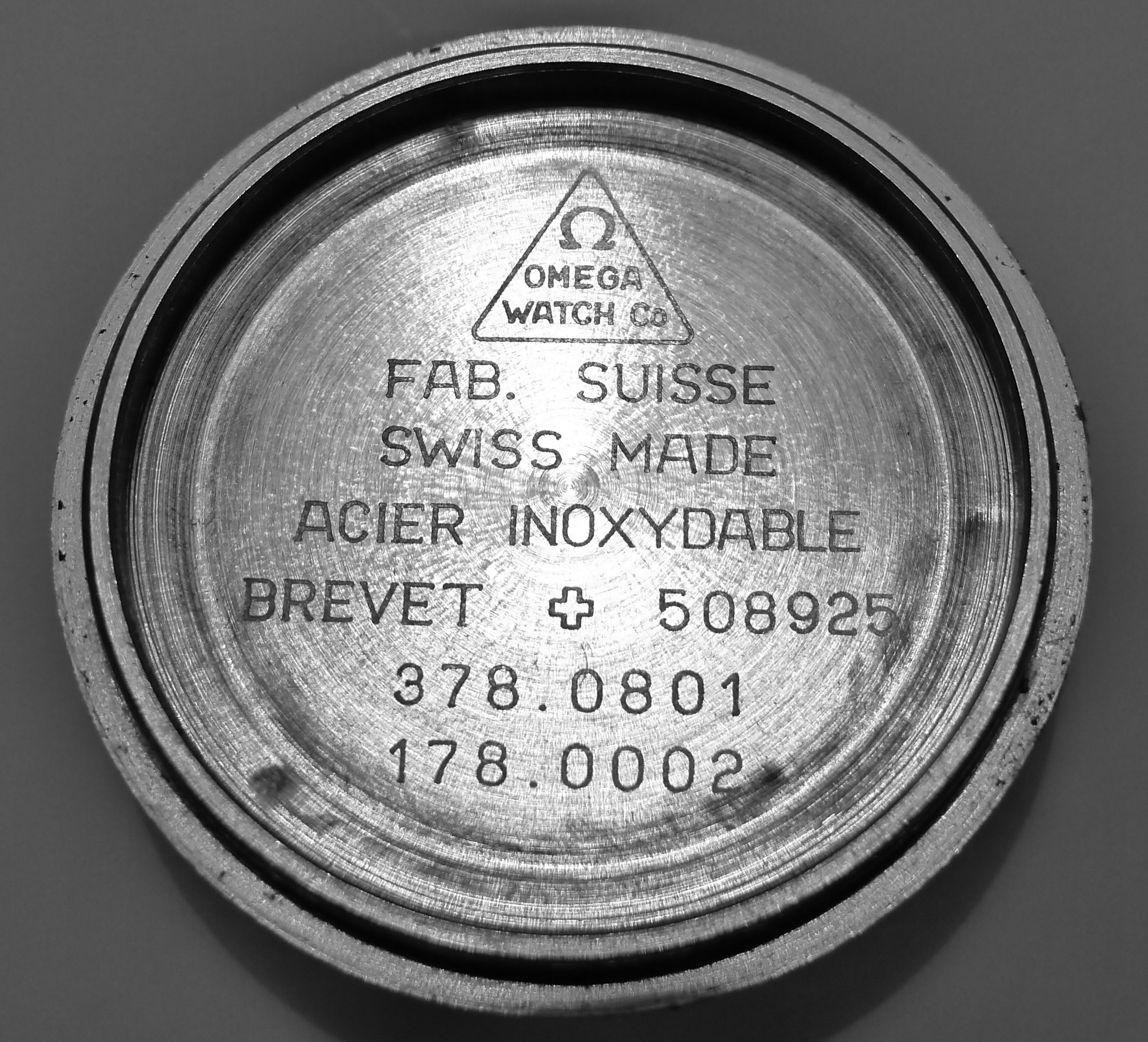

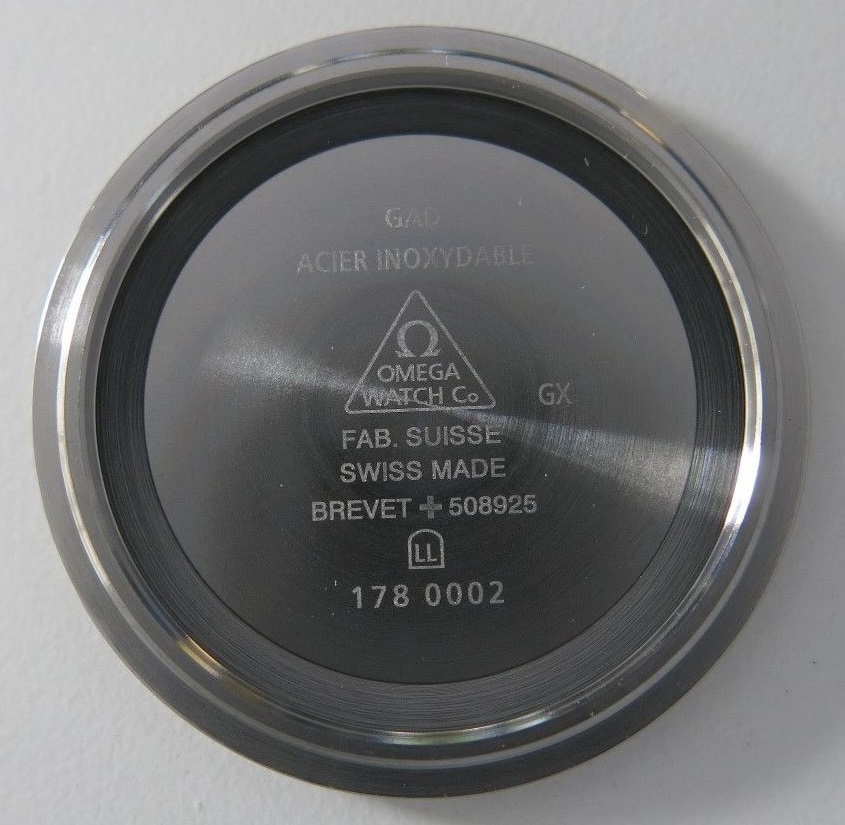

Notice that the early versions contain both case references – 378.0801 and 178.0002. The service caseback only contains a single reference, 178.0002.
A Strange “SEAMASTER” Speedmaster 125 Caseback
This one looks like a modern, or at least post-1970s, service caseback. It is fairly common for Speedmasters to have casebacks that read “Seamaster”, but the Speedmaster 125 almost always says Speedmaster. That makes this caseback, found on eBay, strange:
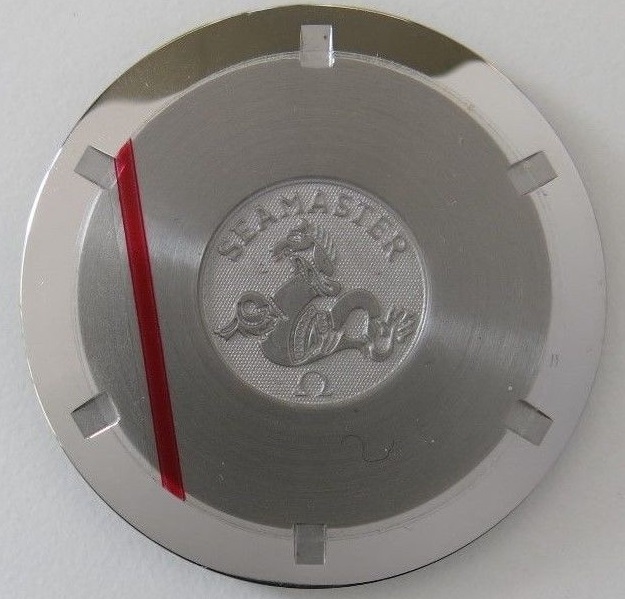

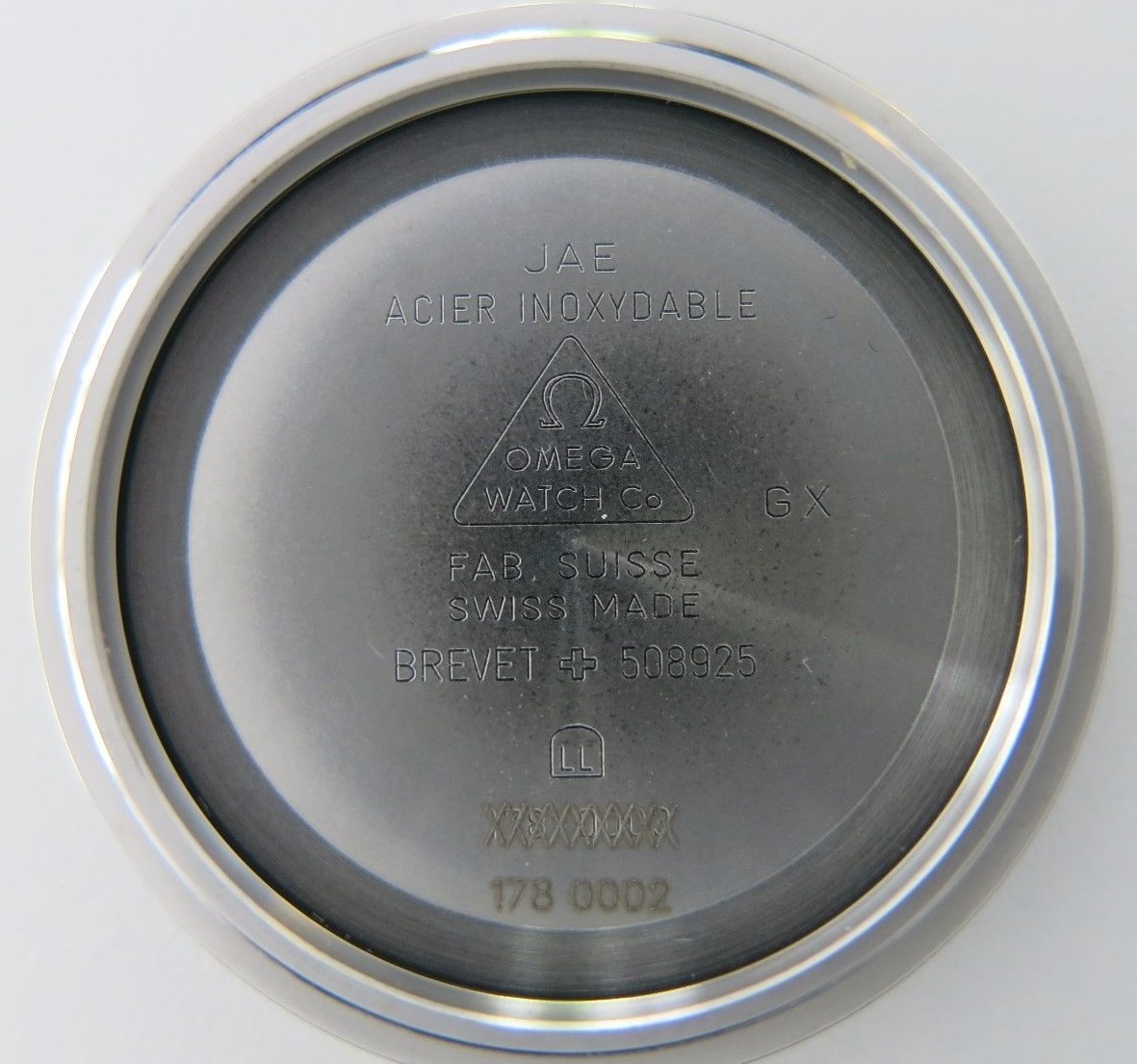

It looks like this one was originally stamped 178.0003, which was then crossed out and replaced by 178.0002.
Spotting Modern Service Casebacks
Modern casebacks use laser engraving instead of stamping on both the inside and outside. Thus, spotting a relatively modern service caseback is easy. I do not know when case makers switched from stamping to lasers. So it can easily be said that a laser-engraved part is a modern service replacement, but just because a part is stamped doesn’t make it original. It could still be an older service part.
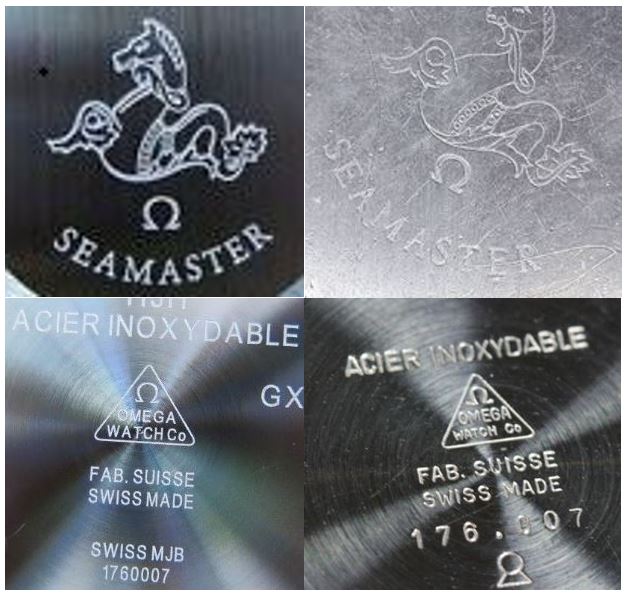

Update: January 2018
I recently saw this photo in an eBay listing for a Speedmaster 125, showing the Omega “anti counterfeit globe” as it its known:
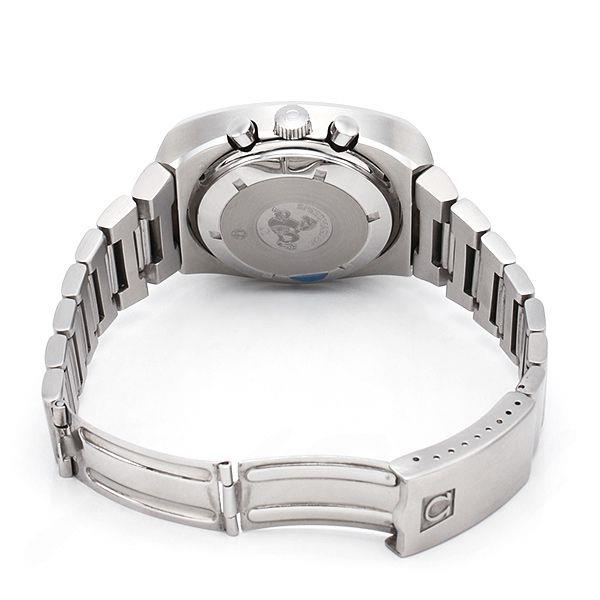



So it appears that modern service parts may include this symbol as well. Thus far I’ve only seen it on this Speedmaster 125, but it may turn up on the service casebacks of other vintage watches, including others in the 1040 family.


